- Performance bargain
- Intoxicating exhaust noise
- Aggressive styling to back up the noise
- High road noise levels
- Interior quality is lacking
- Not efficient in most driving
Hyundai really changed the hot hatch segment when it released the i30 N in 2017 thanks to its affordability, performance on offer and strong character. Because of that, the i30 N has been a big sales success in Australia and they’re reasonably common sights locally. In addition to launching the Kona N and an automatic variant of the hatchback, Hyundai has now changed things again by introducing the new 2022 Hyundai i30 N Premium Sedan which we have here. Is it worthy of consideration over the hatchback – and indeed its rivals like the WRX and Octavia RS? Let’s find out.
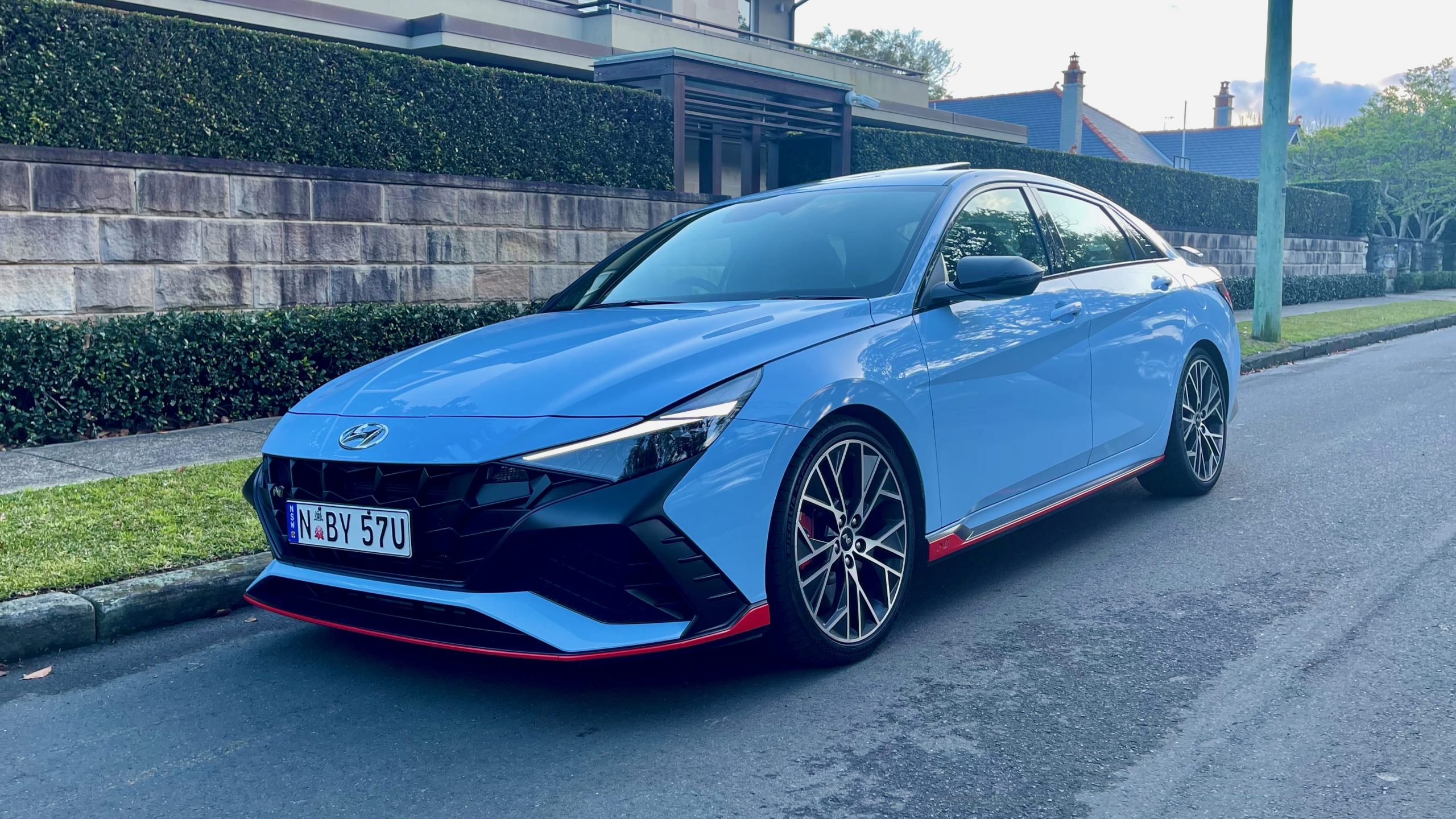
The Hyundai ‘N’ movement in Australia has started and we are very much onboard. Starting with the i30 N hatch, then followed by the smaller i20 N, Kona N and now the i30 N sedan, Hyundai keeps expanding its range to new heights – you can thank former BMW engineer and now Hyundai N development boss Albert Biermann for that.
Price & Equipment: 9/10
Unlike the 2022 Hyundai i30 N hatch there is only one variant of the i30 N sedan: the Premium, which sits atop the hatchback’s range. Priced at $50,200 plus on-road costs (around around $55,000 drive away depending on location) no matter which transmission you opt for, the N Premium sedan costs $1,000 more than the i30 N Premium hatchback.
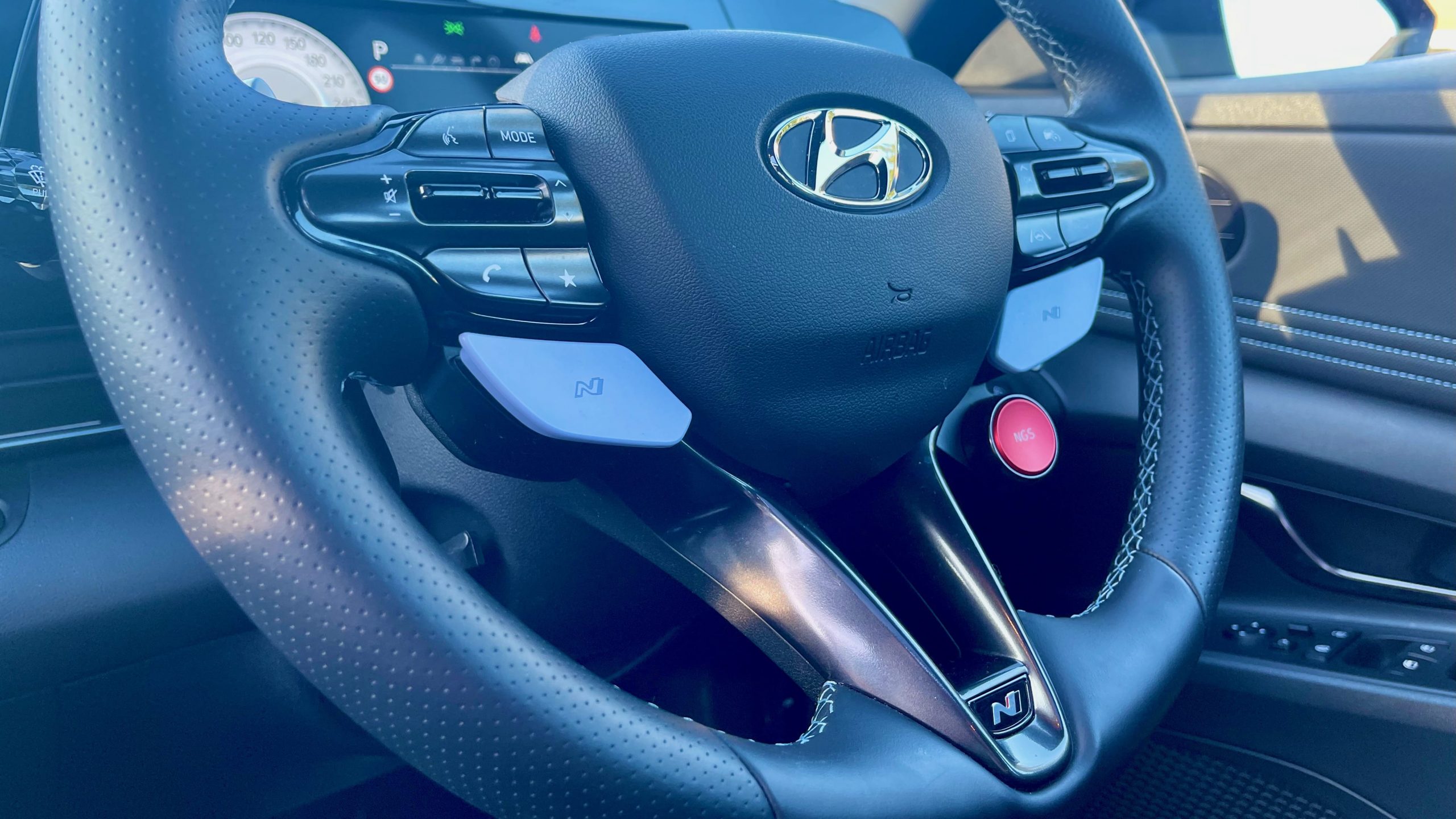
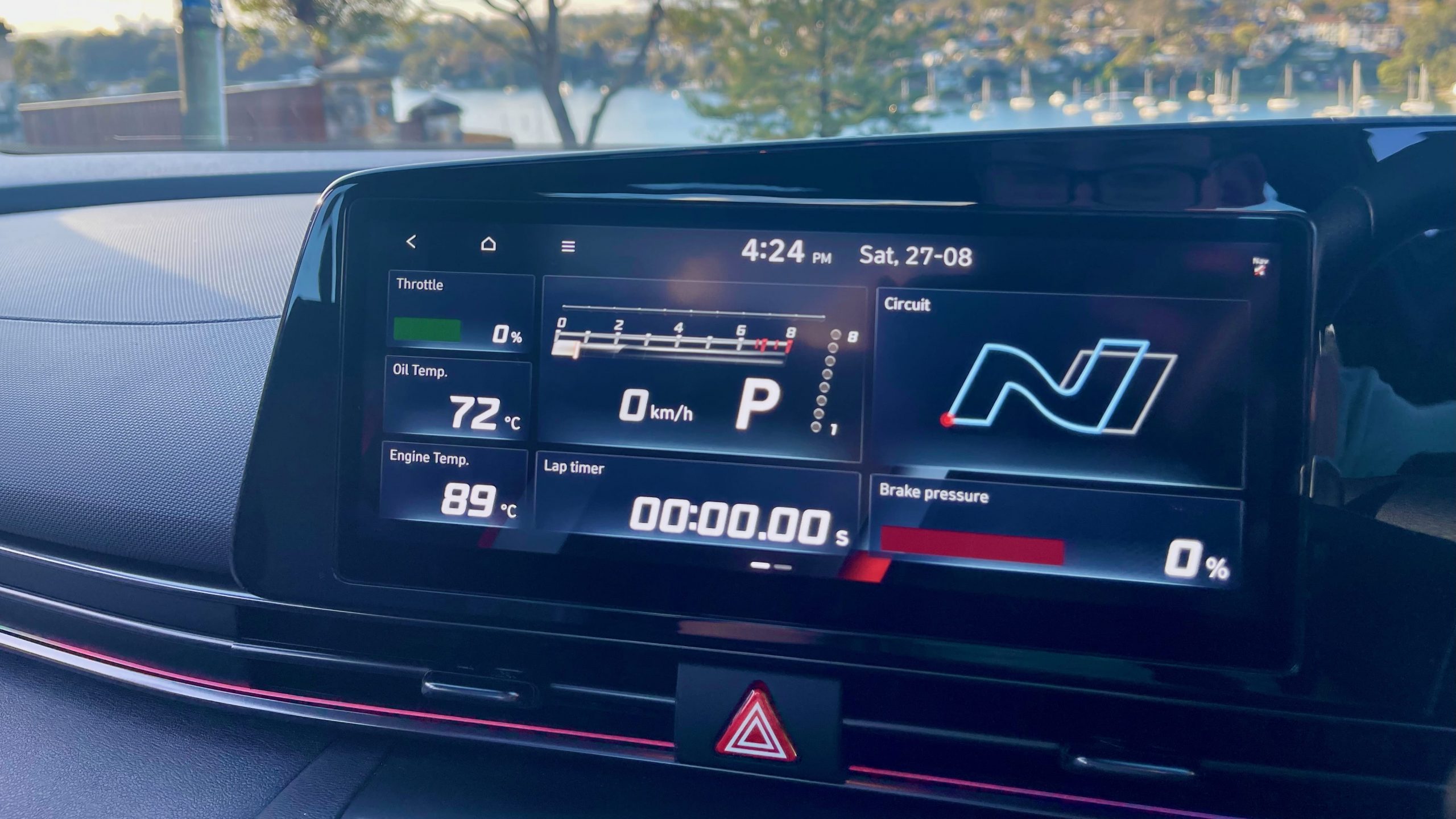
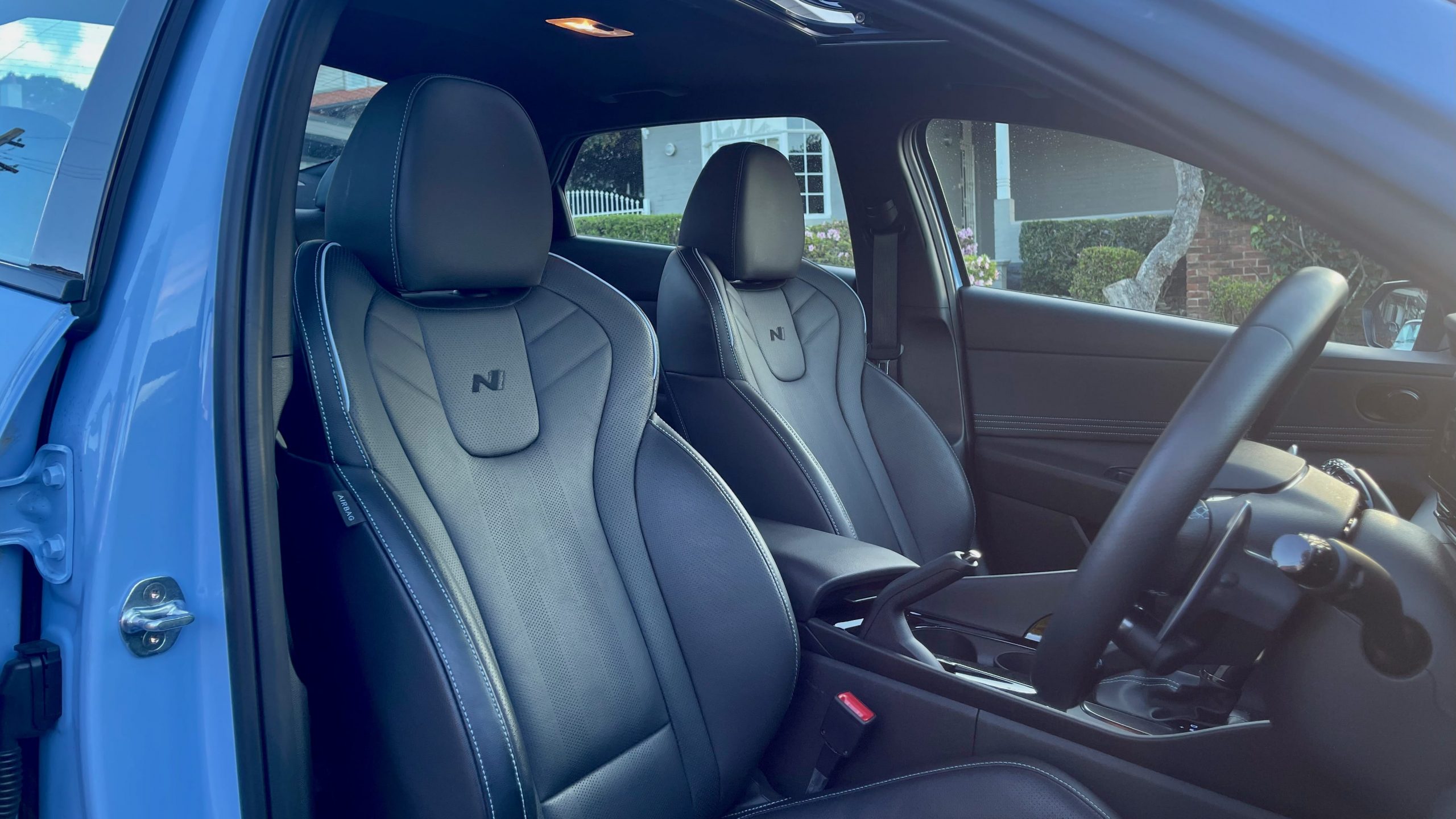
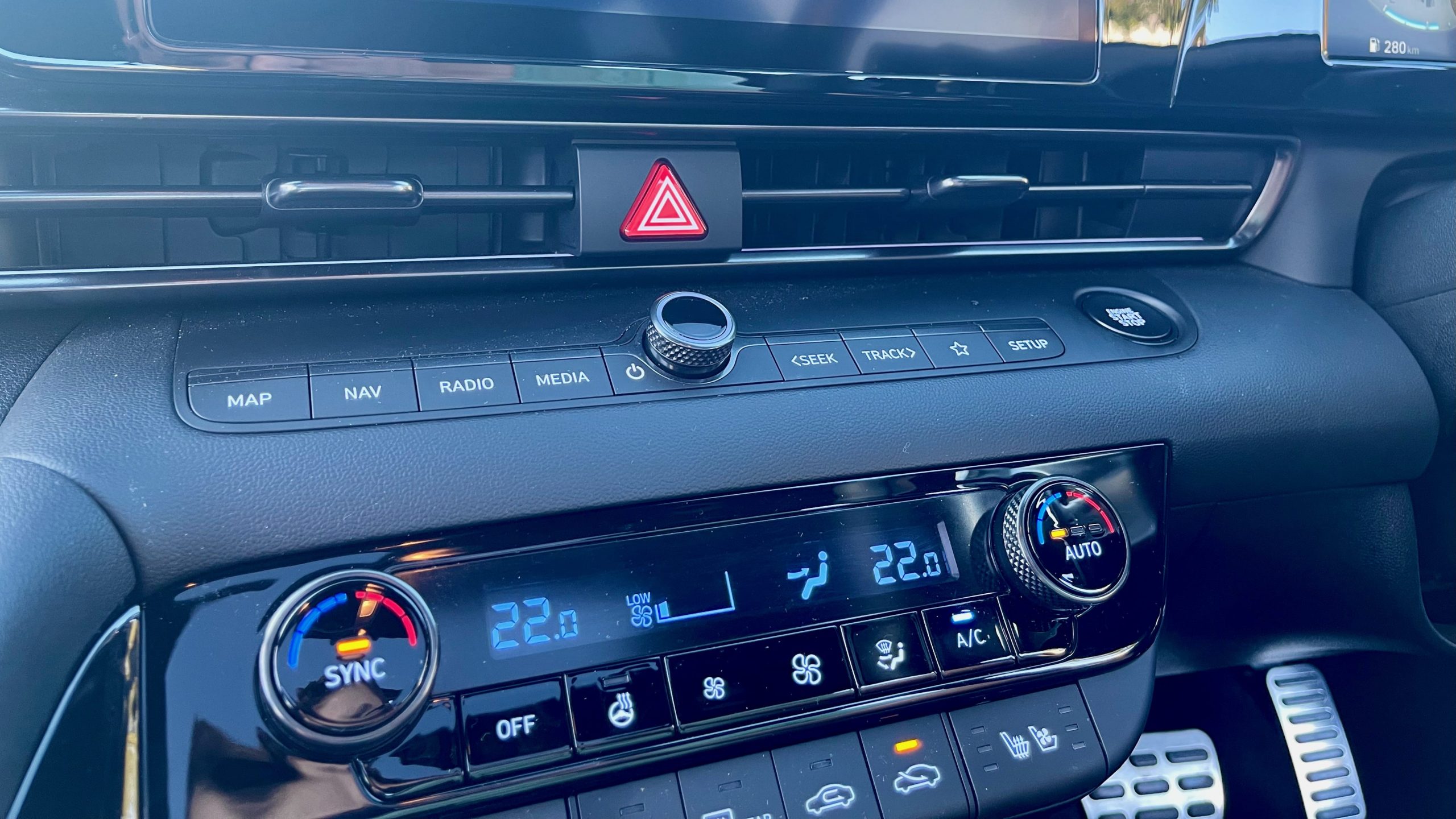
The 2022 Hyundai i30 N Premium sedan is equipped with 19-inch alloy wheels, a 10.25-inch touchscreen with wired Apple CarPlay and Android Auto, a 10.25-inch digital driver’s display, satellite navigation with live traffic updates, digital radio, an eight-speaker Bose sound system, keyless entry with push button start (with remote start for the automatic), a wireless smartphone charger, automatic LED headlights, auto wipers, heated and auto-folding mirrors, heated and cooled front bucket seats, an electric driver’s seat with memory, auto up and down drivers window, a heated steering wheel, dual-zone climate control, LED interior ambient lighting, rear privacy glass, an auto-dimming rear view mirror and adjustable electronic dampers.
Safety kit in the 2022 Hyundai i30 N Premium sedan includes six airbags, automatic emergency braking (AEB) with pedestrian and cyclist detection, driver fatigue monitoring, automatic rear braking, blind-spot monitoring with rear cross-traffic alert, lane departure warning with lane keep assist, automatic high beam, a reversing camera, front and rear parking sensors and tyre pressure monitoring.
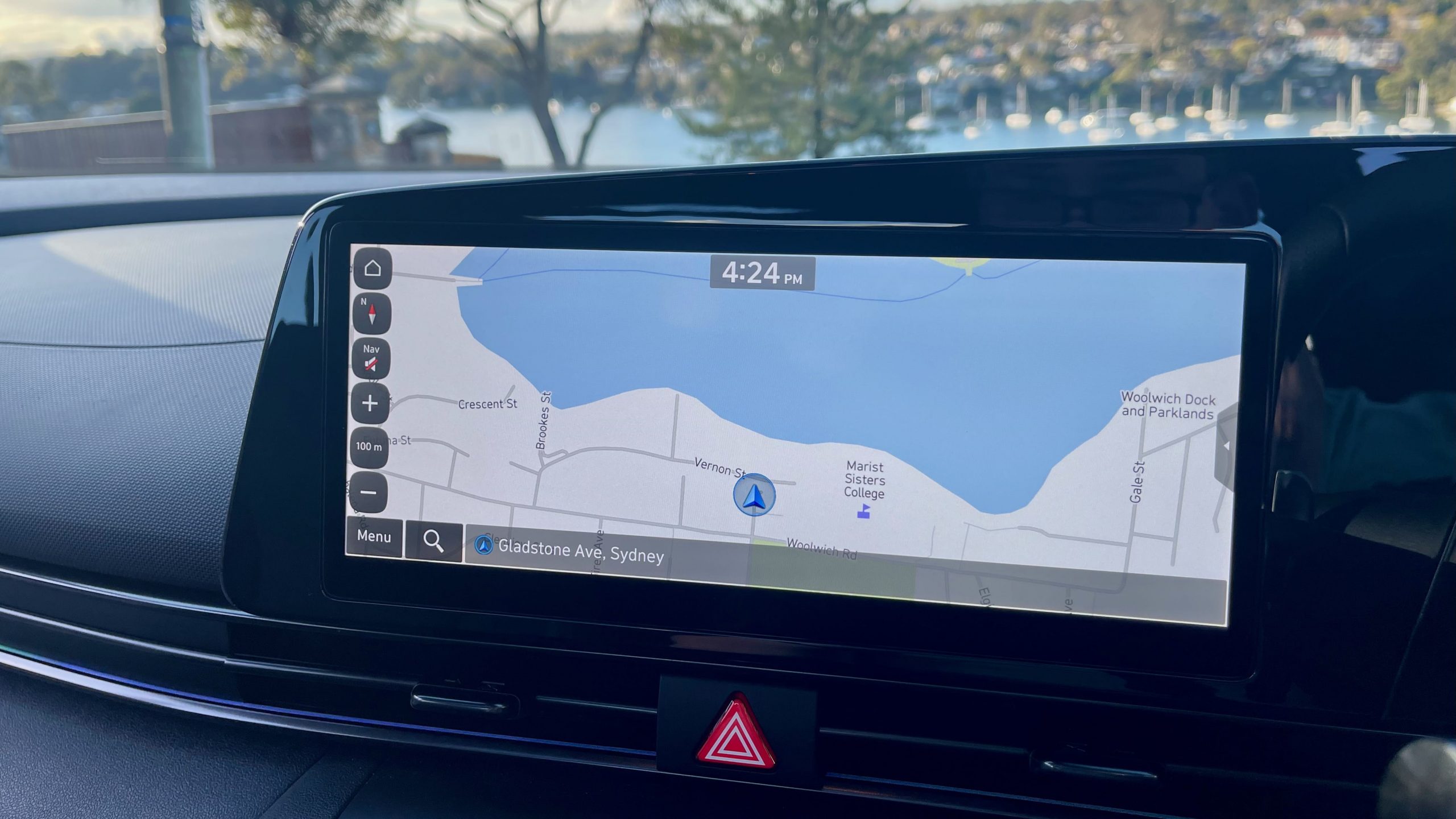
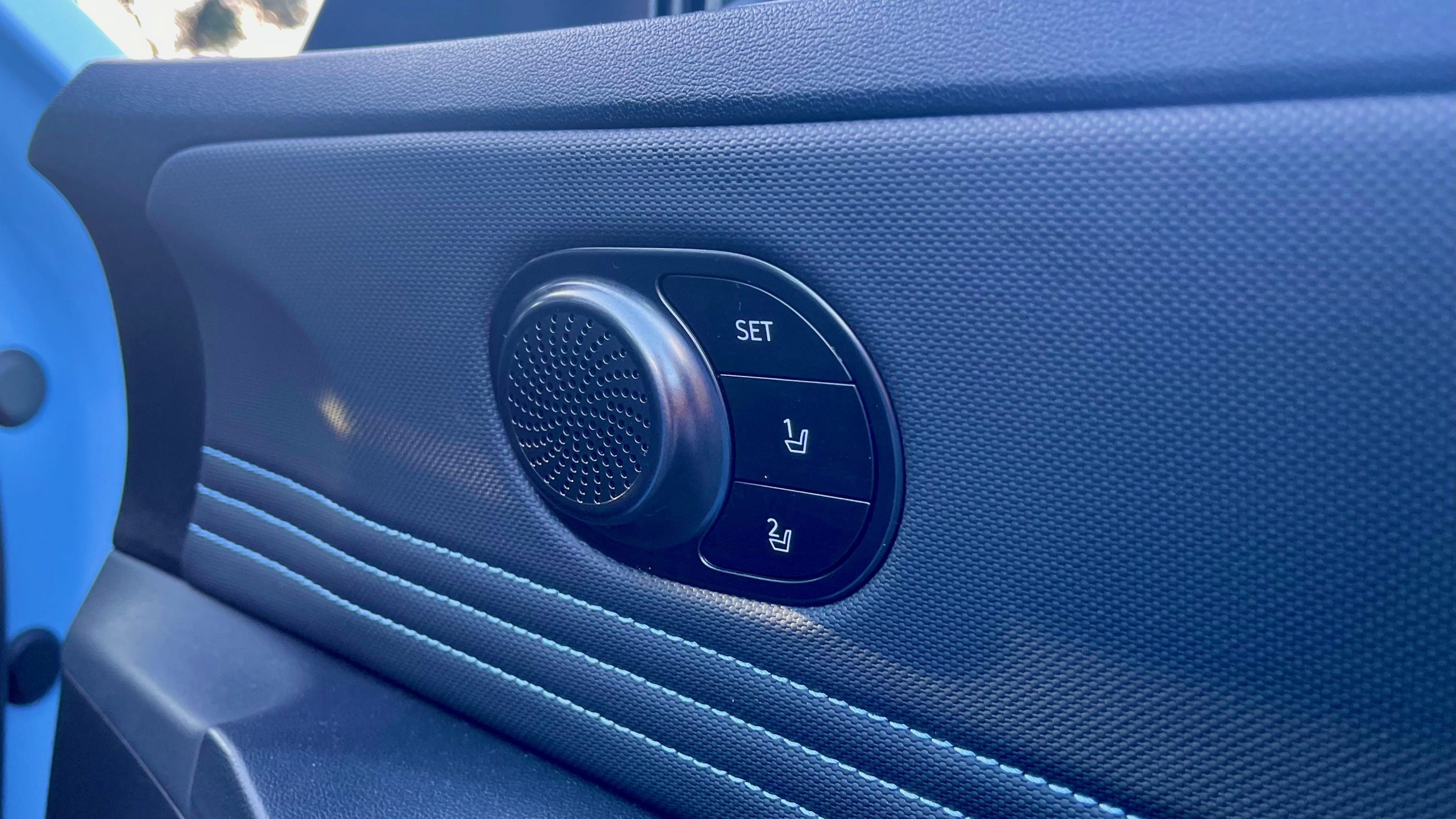
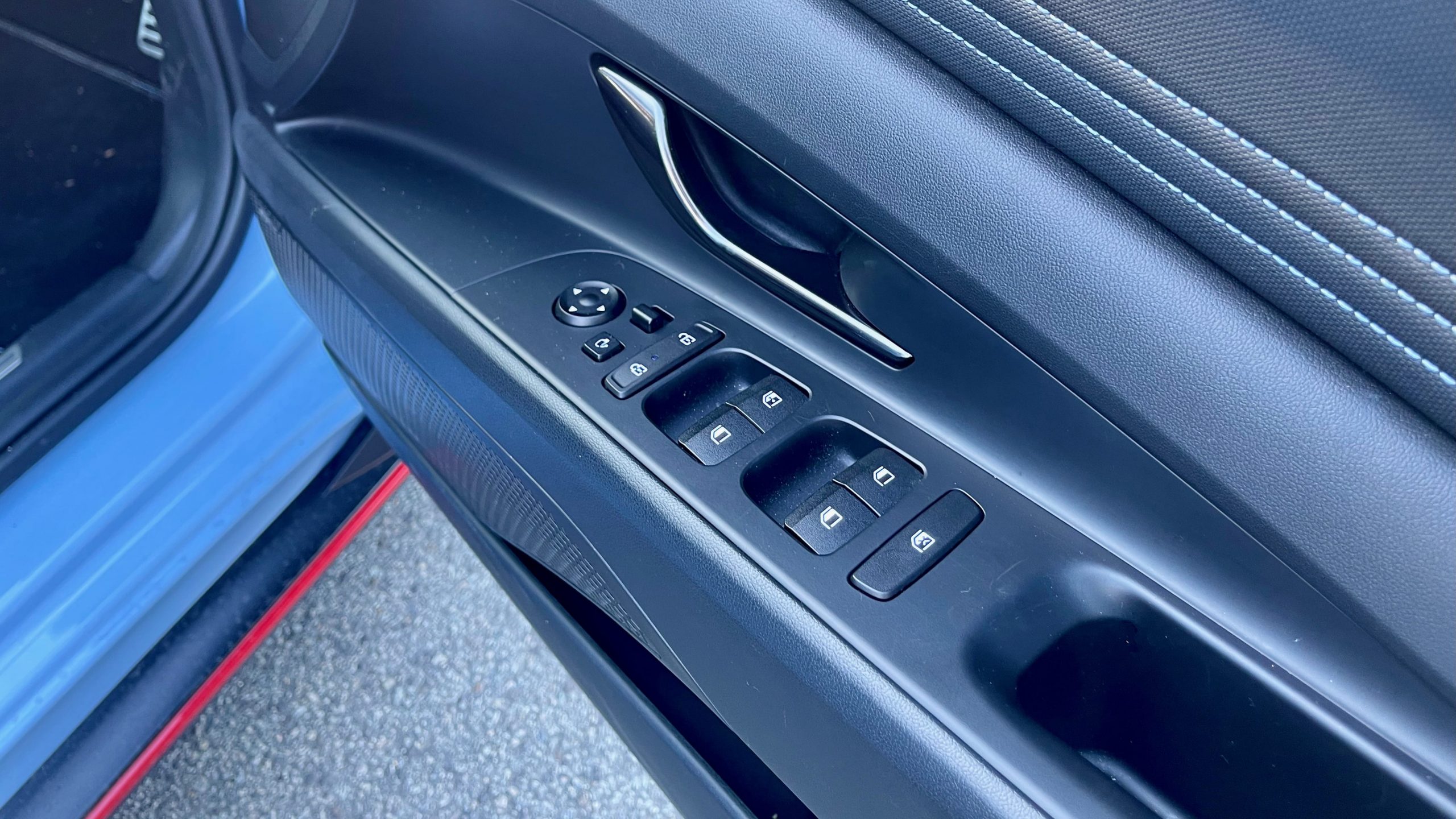
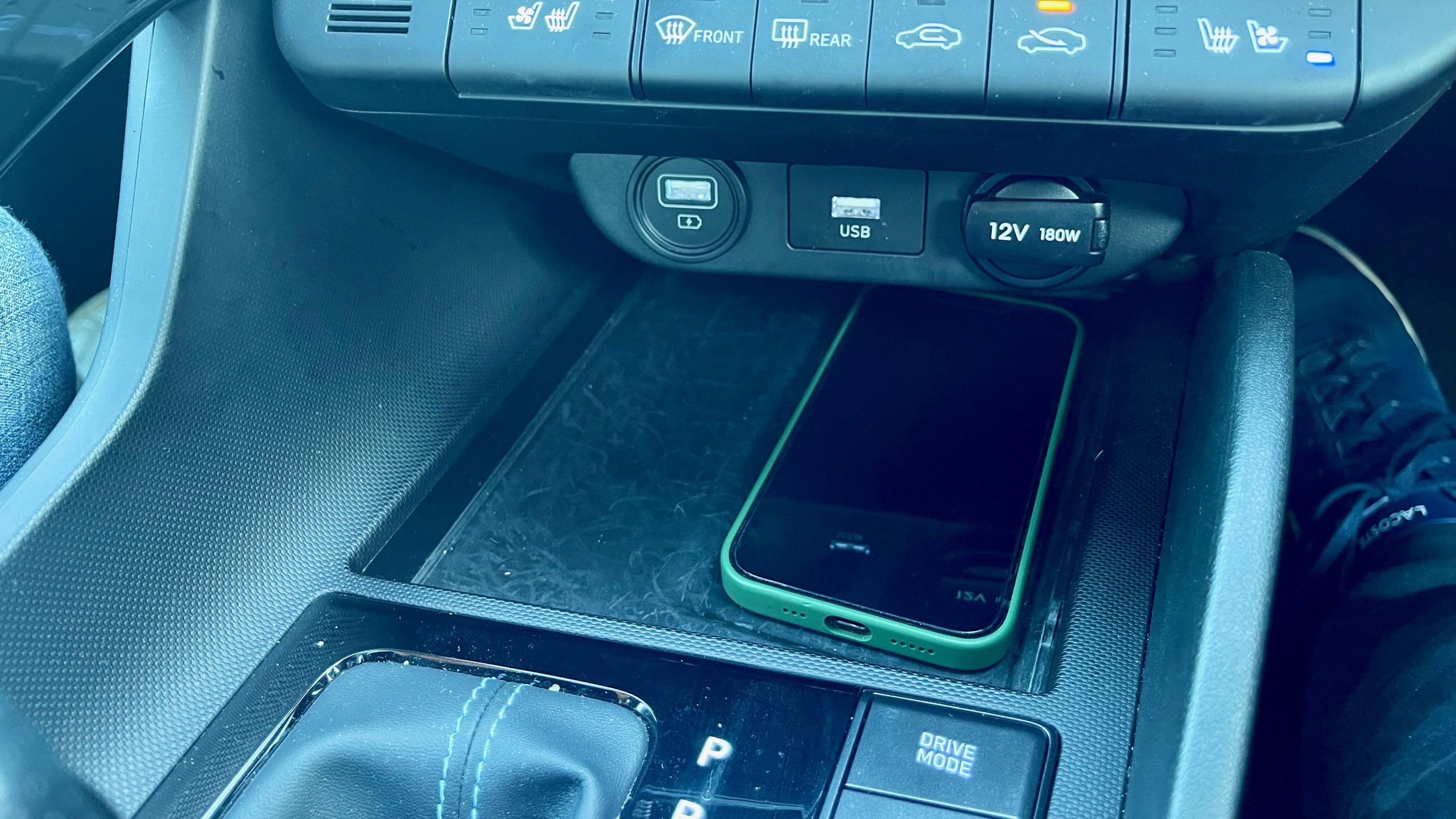
We would like to see the addition of an electric passenger seat, adaptive cruise control and an electronic park brake (or at least a leather wrapped hand brake), automatic passenger windows and rear USB ports to the i30 N sedan.
The only option for the 2022 Hyundai i30 N Premium sedan is a sunroof, which adds $2,000 to the price of the car. ‘Polar White’ and our test car’s ‘Performance Blue’ paintwork are the only standard colours with ‘Phantom Black’, ‘Intense Blue’ and ‘Cyber Grey’, ‘Fluidic Metal’ priced at a further $595.
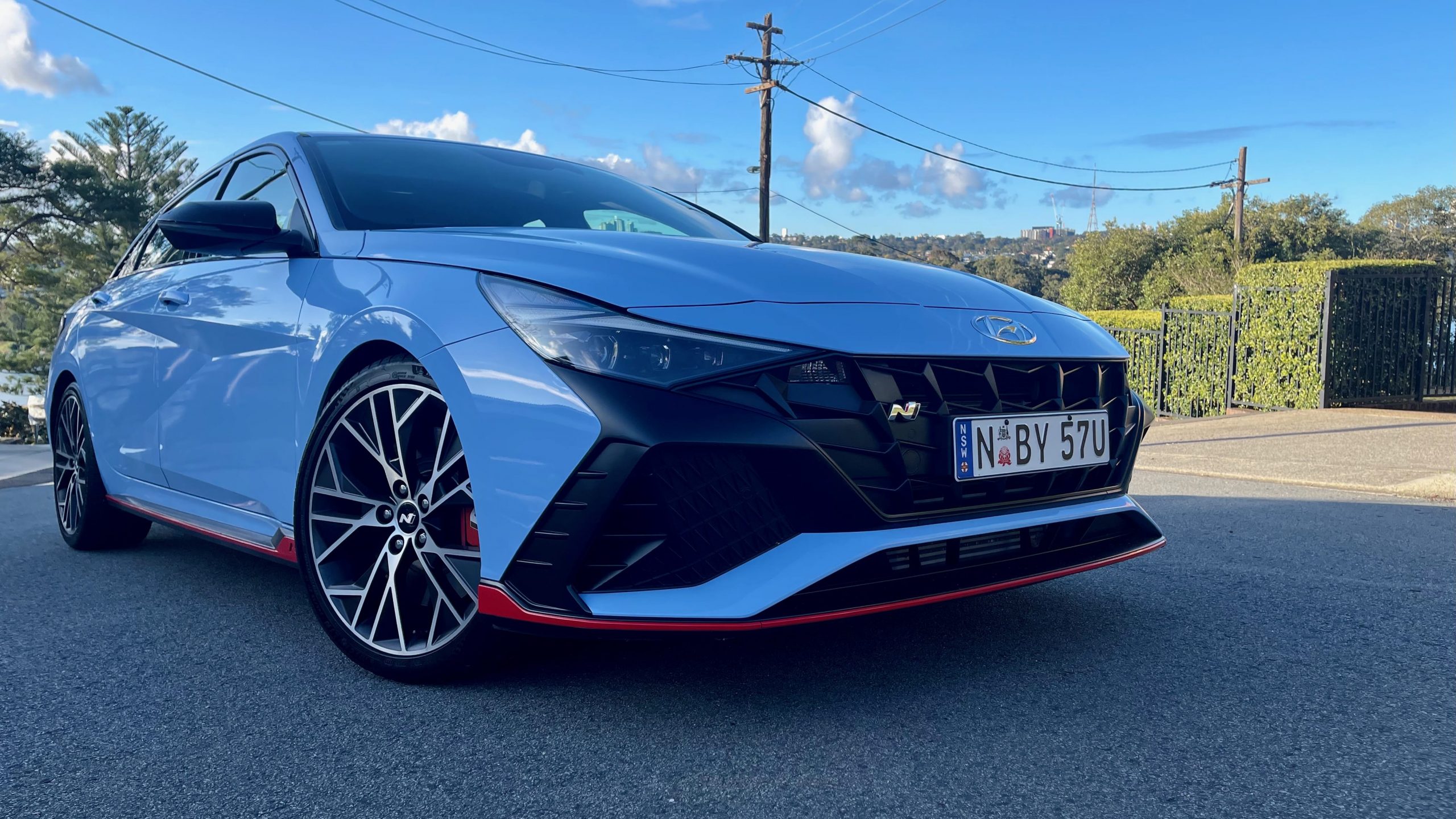
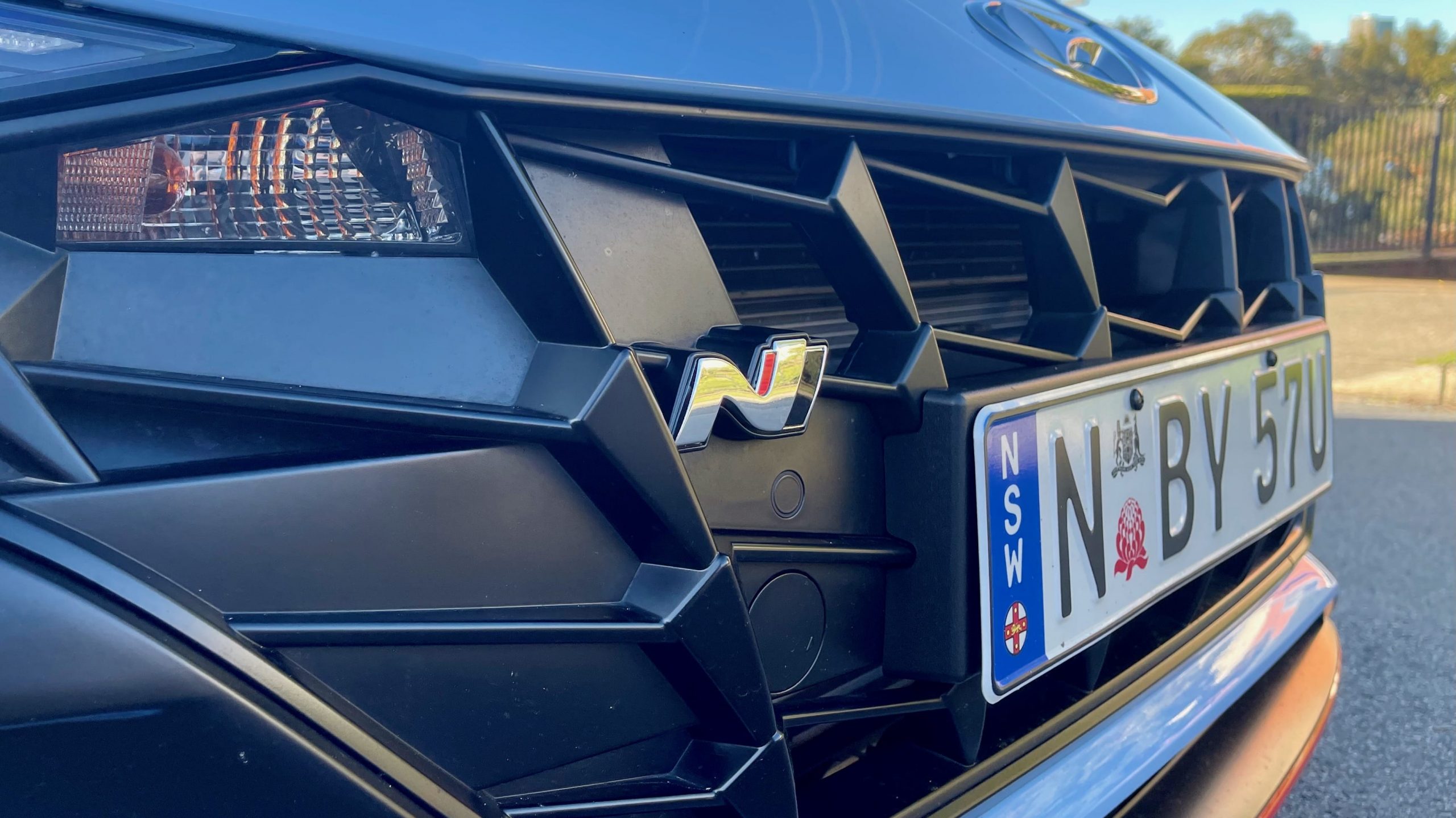
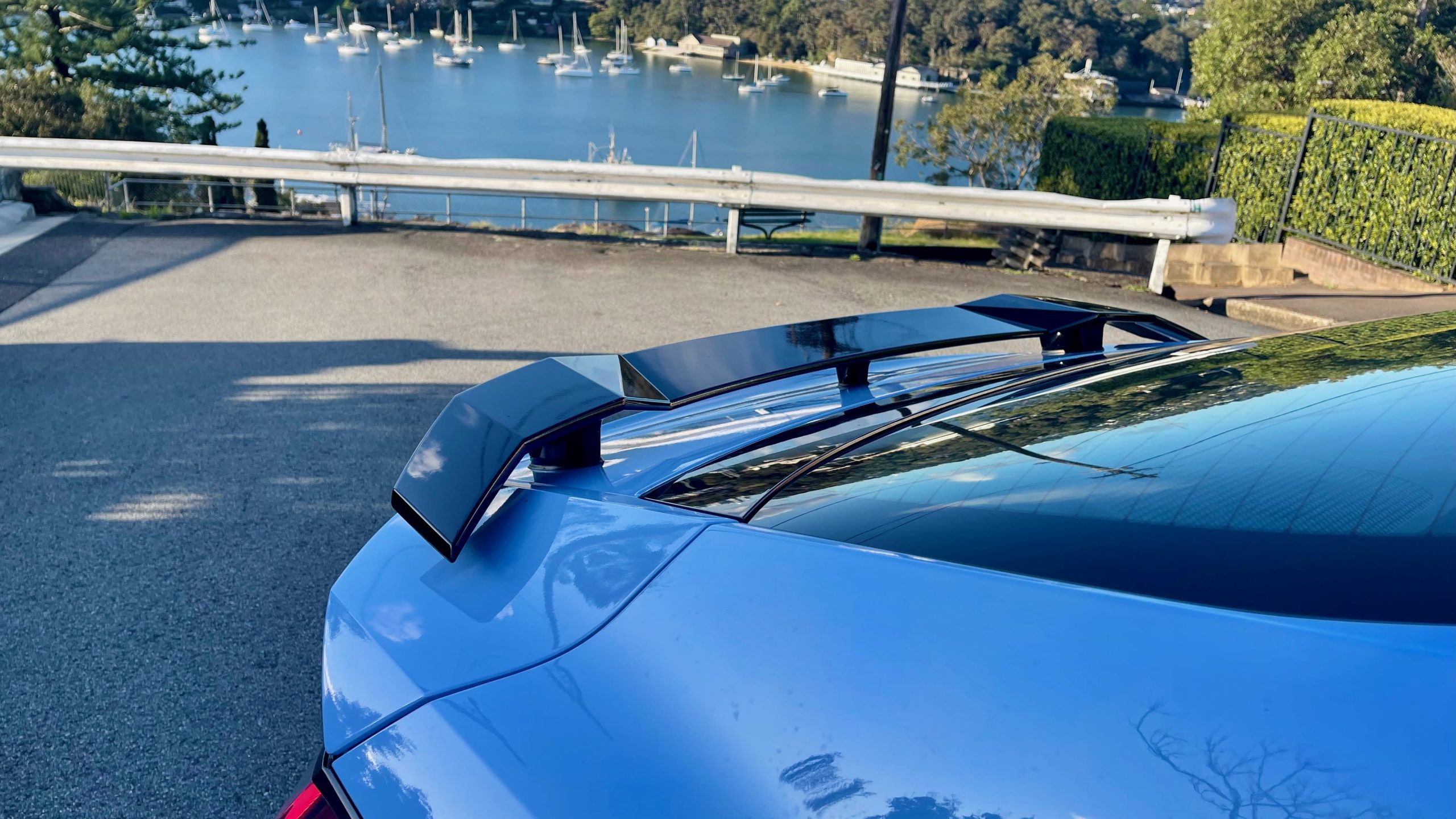
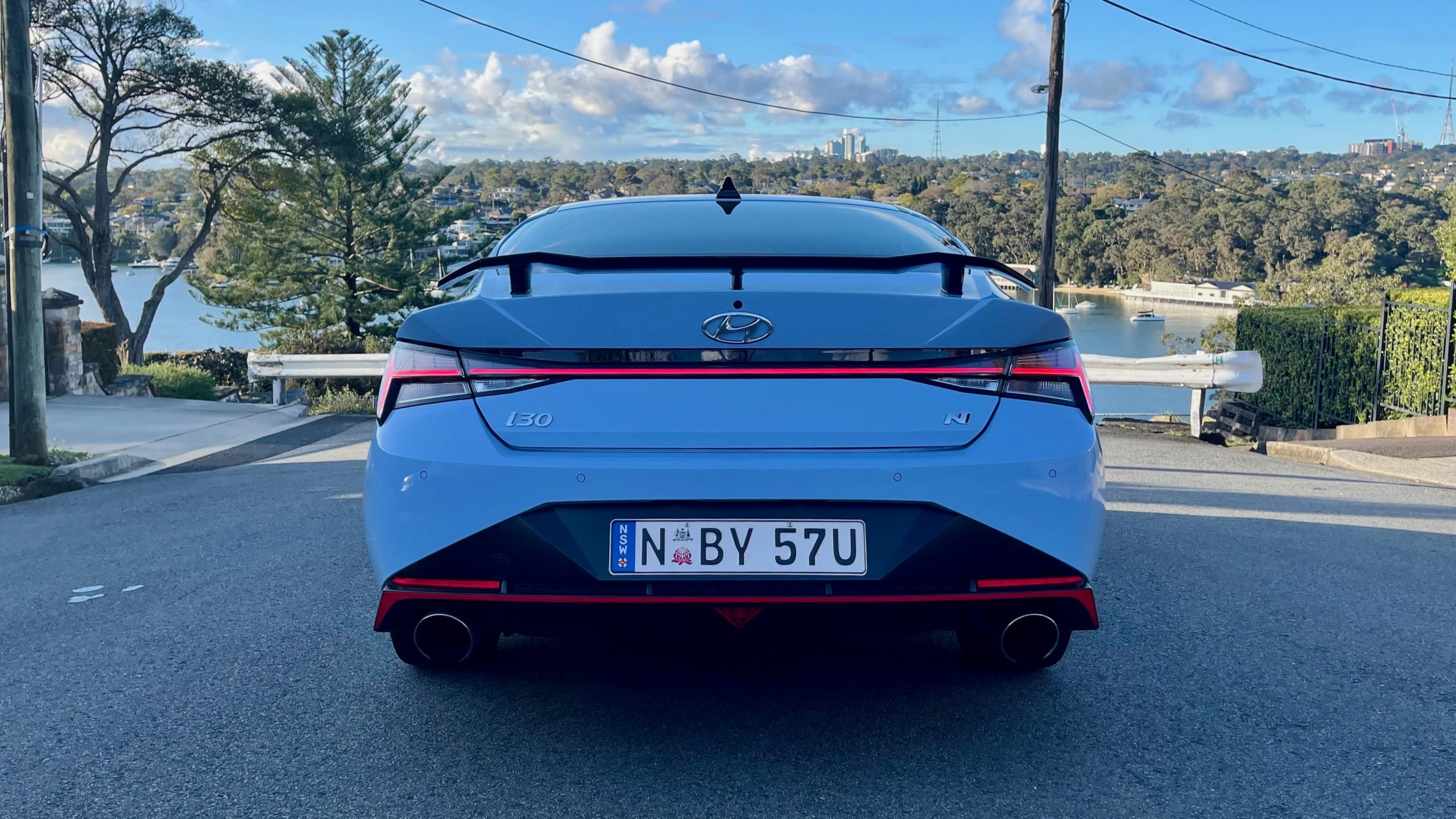
As we mentioned earlier the only real performance sedan rivals are the $56,990 plus on-road costs Subaru WRX tS and the $55,990 drive away Skoda Octavia RS liftback. The i30 N is better equipped than the Skoda and comes with an equipment list pretty on par with the Subaru – but the Hyundai is priced a full $6,500 less.
Engine & Performance: 9/10
Thankfully, the i30 N sedan’s engine remains unchanged from the engine in the hatch variant. That means you get the same 2.0-litre turbocharged four-cylinder engine that produces 206kW of power (at 6,000rpm) and 392Nm of torque (between 2,100rpm and 4,700rpm). Power is sent via a mechanical e-LSD – which can send power to either front wheel to get the best traction – to the front wheels.
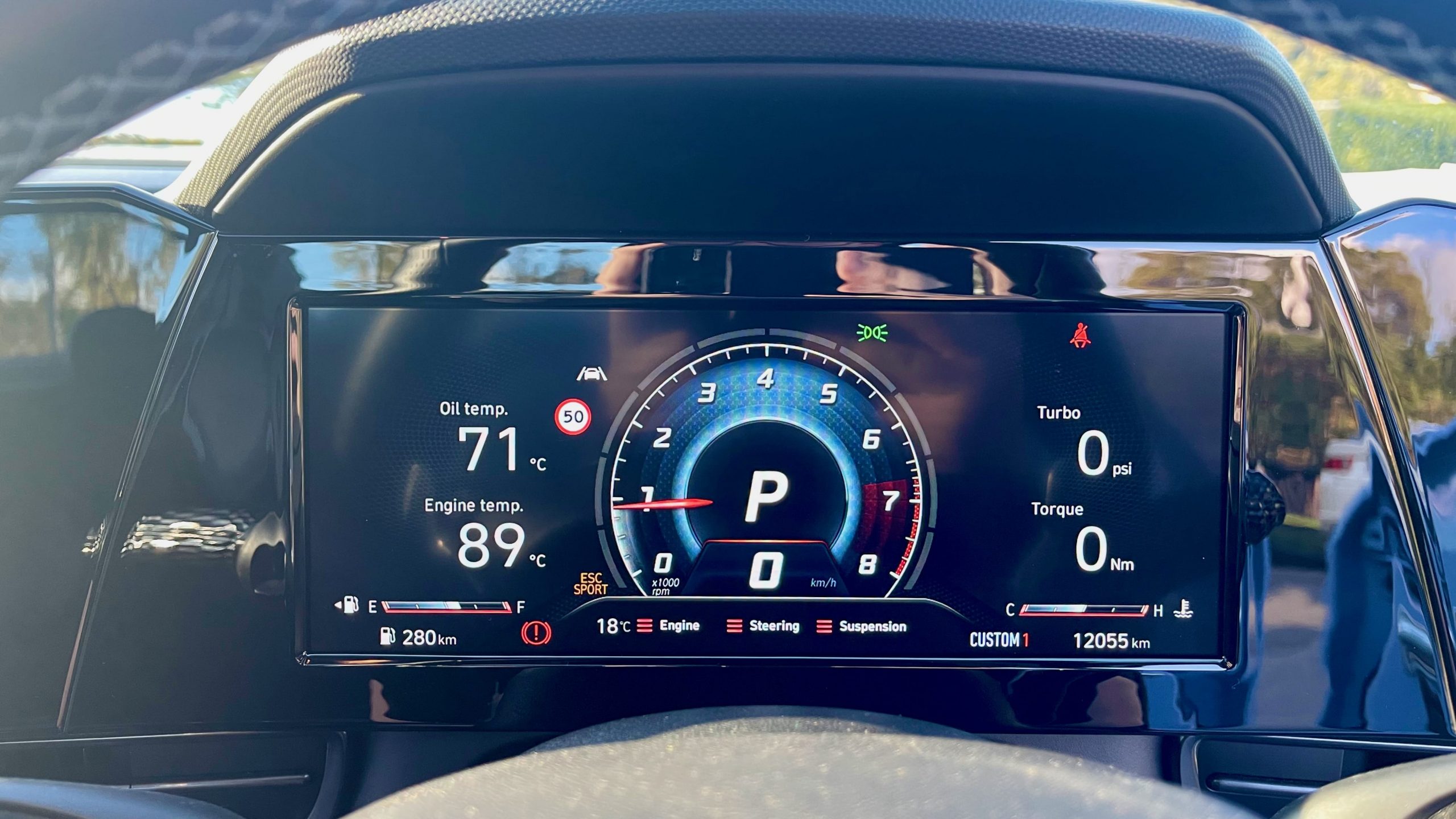
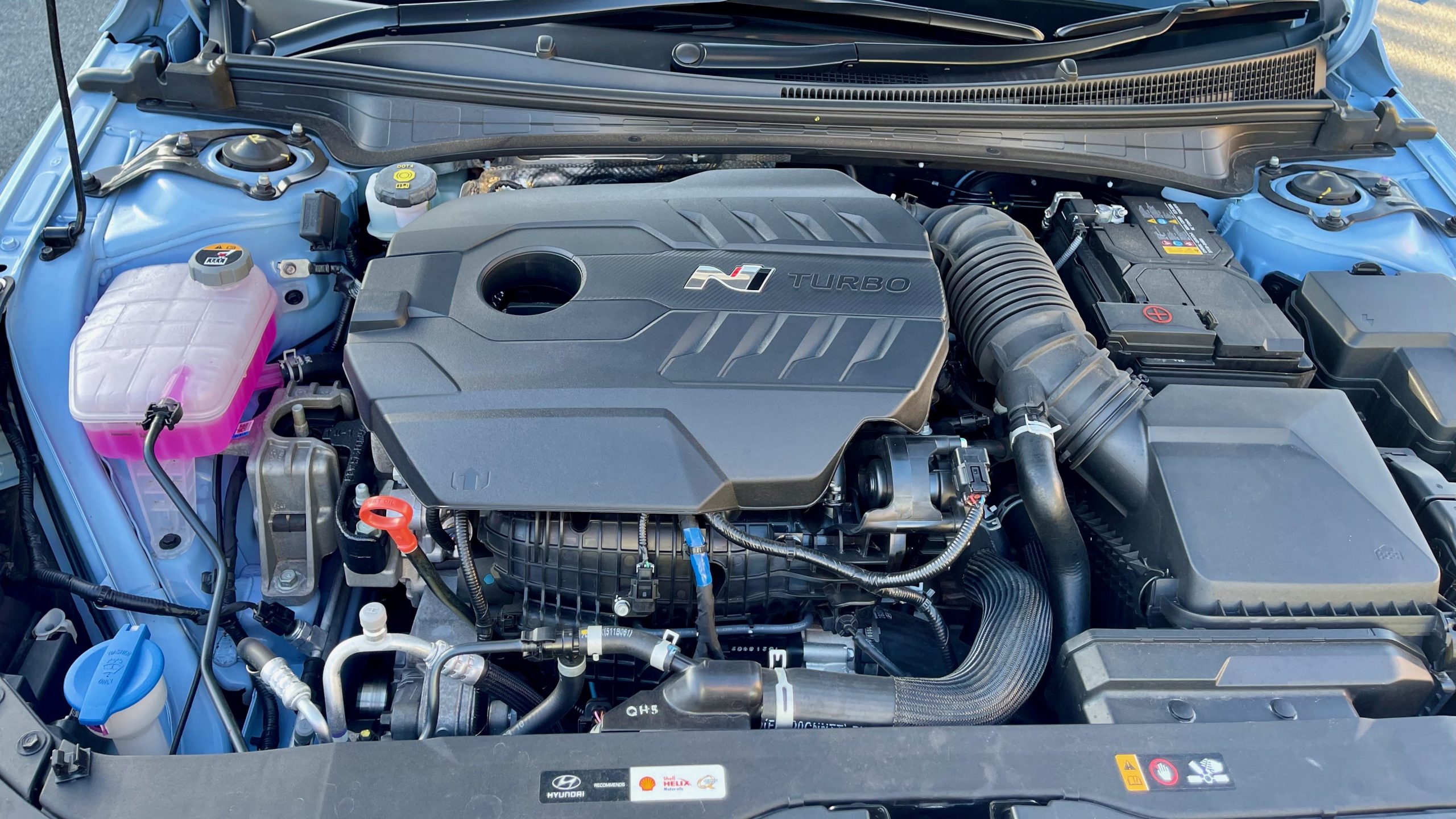
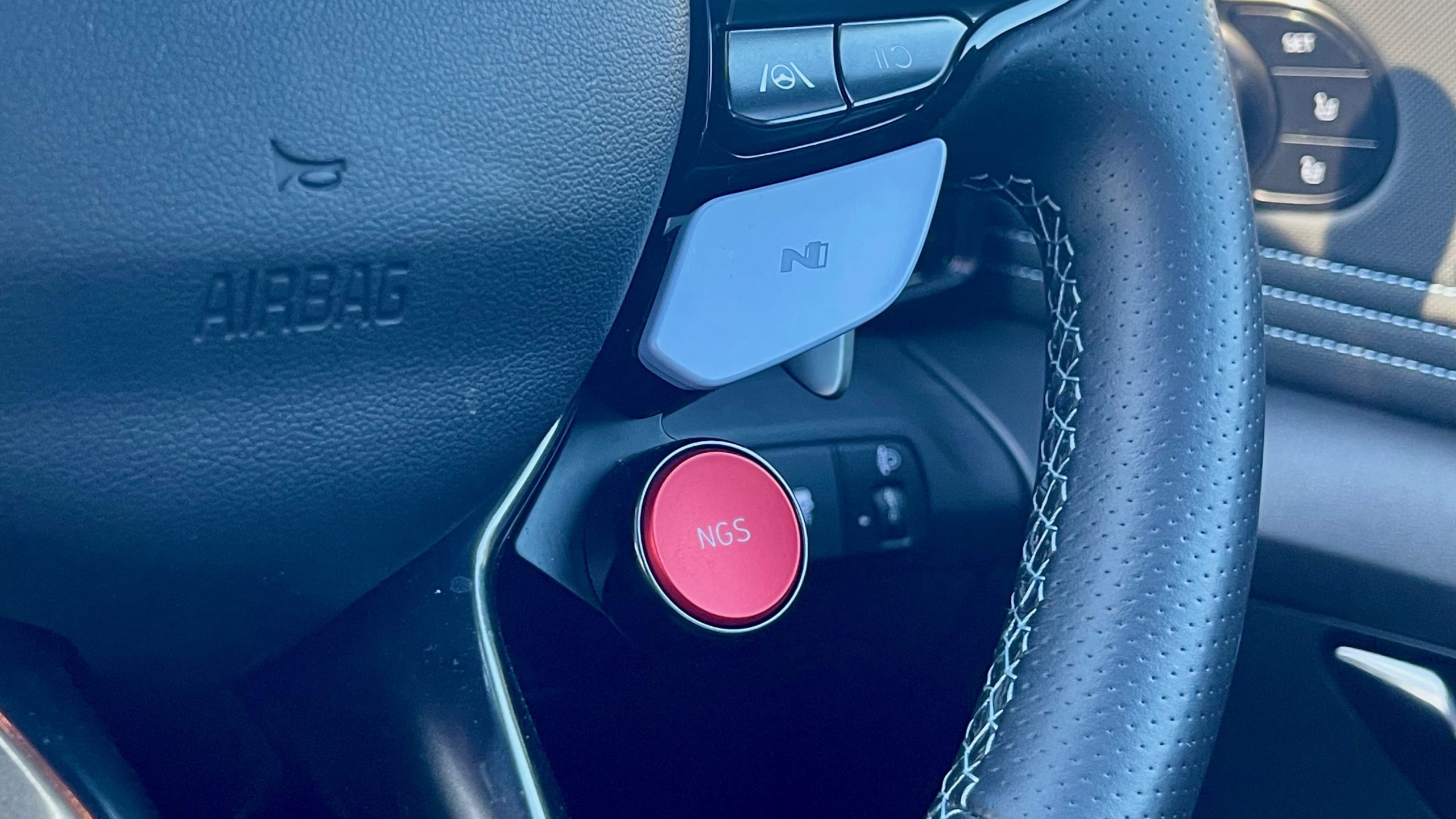
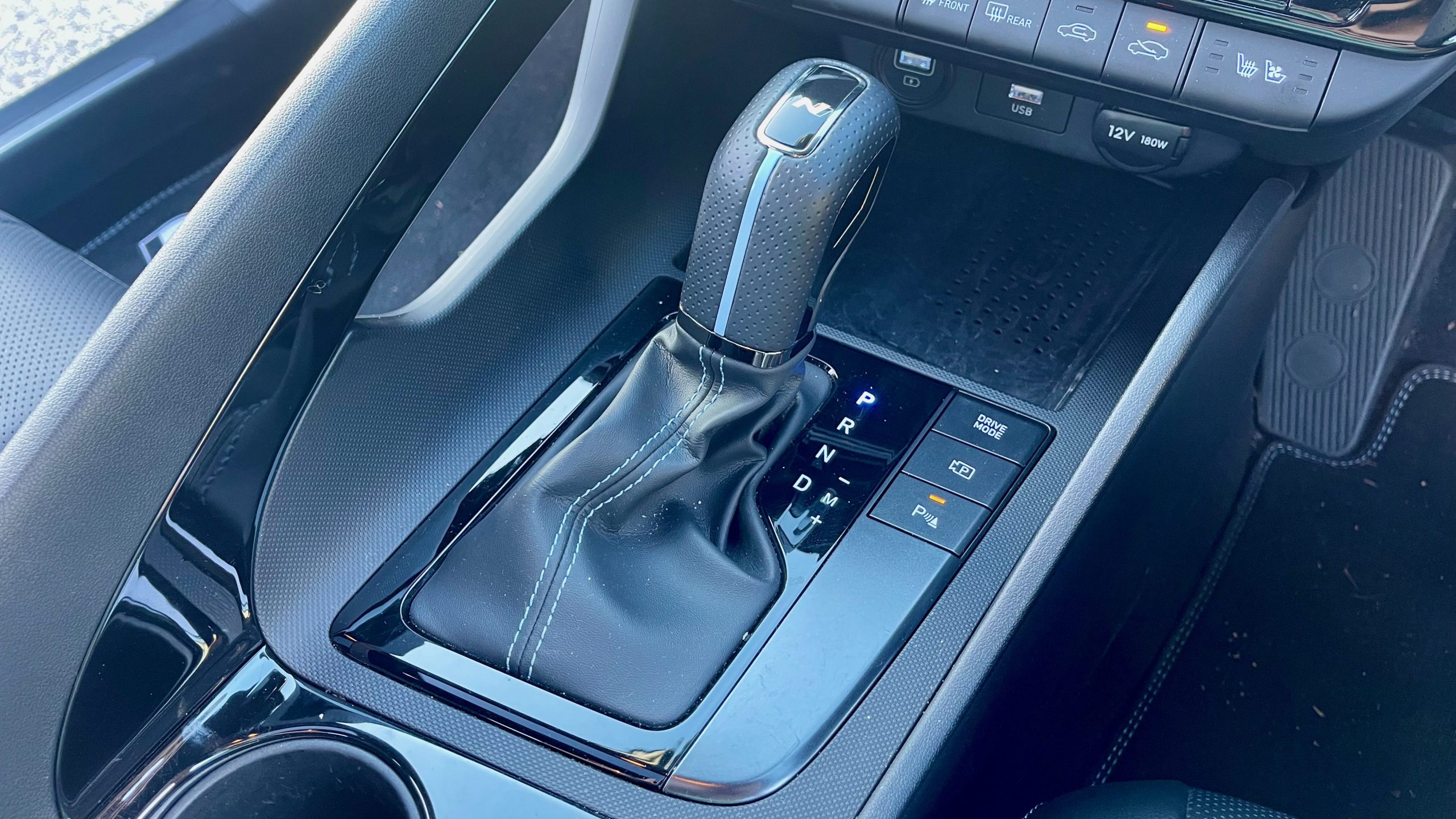
As we’ve experienced in the i30 N hatchback and Kona N SUV, the engine in the i30 N sedan is an absolute firecracker. It feels quite strong throughout the rev range and it sounds great doing so. The bi-modal exhaust really brings the engine to life and the pops and bangs on the overrun are addictive – especially compared to the uninteresting noise that the new Subaru WRX makes. The engine can propel the i30 from 0-100km/h in 5.3 seconds for the auto and 5.8 seconds for the manual – more than a second faster than the WRX, thanks to its lighter weight (1,500kg versus 1,585kg).
There are two available transmissions for the i30 N sedan: close ratio six-speed manual and the option we have here: an eight-speed dual-clutch automatic, which recently made its debut in the N hatchback after launching with the Kona N. Surprisingly, both transmissions cost the same and while we will always prefer a manual, the dual-clutch ‘box is rather good. For a first attempt it is excellent – while there can be a little low speed hesitancy, it shifts quickly and is very responsive when in manual mode.
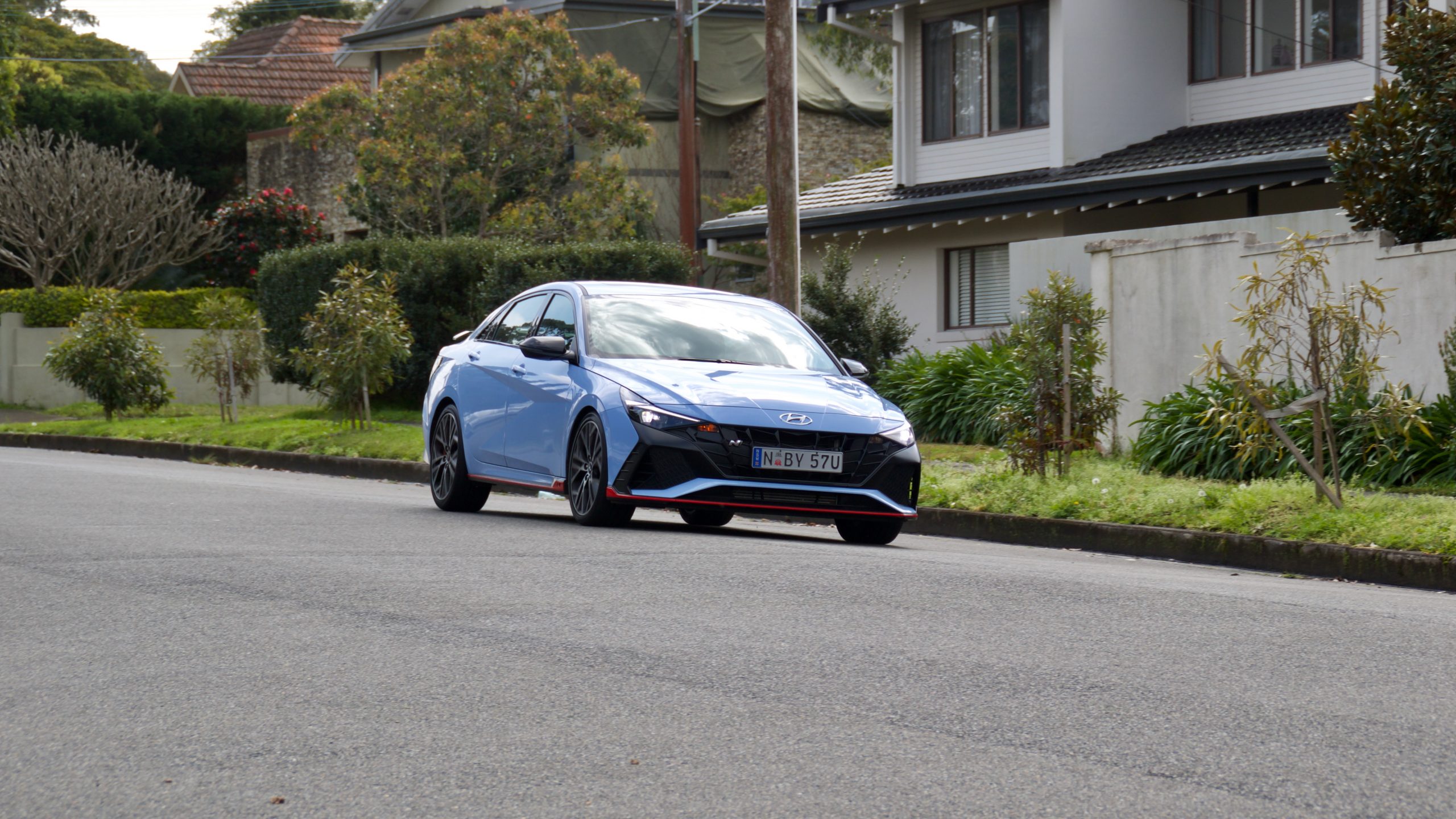
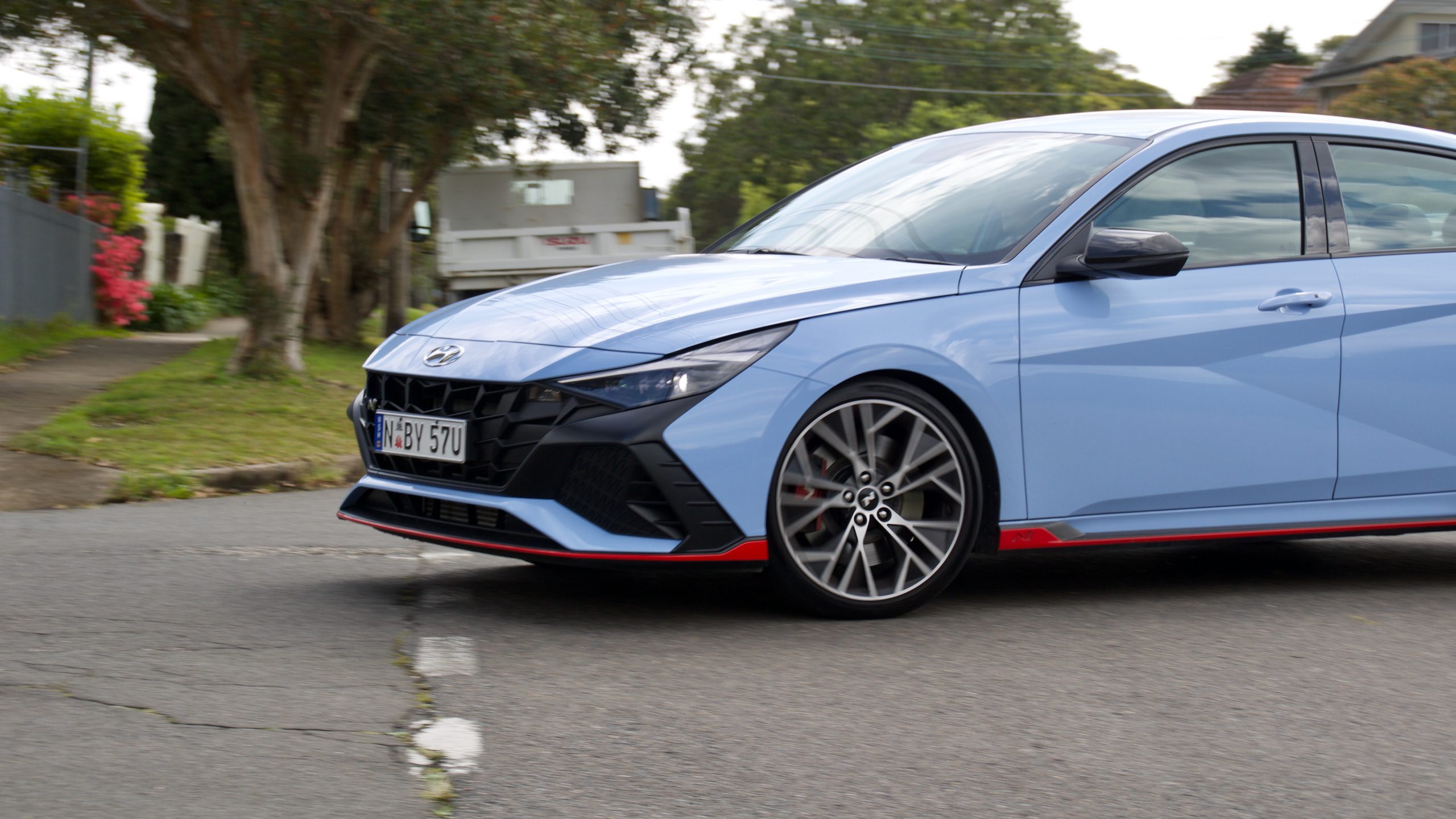
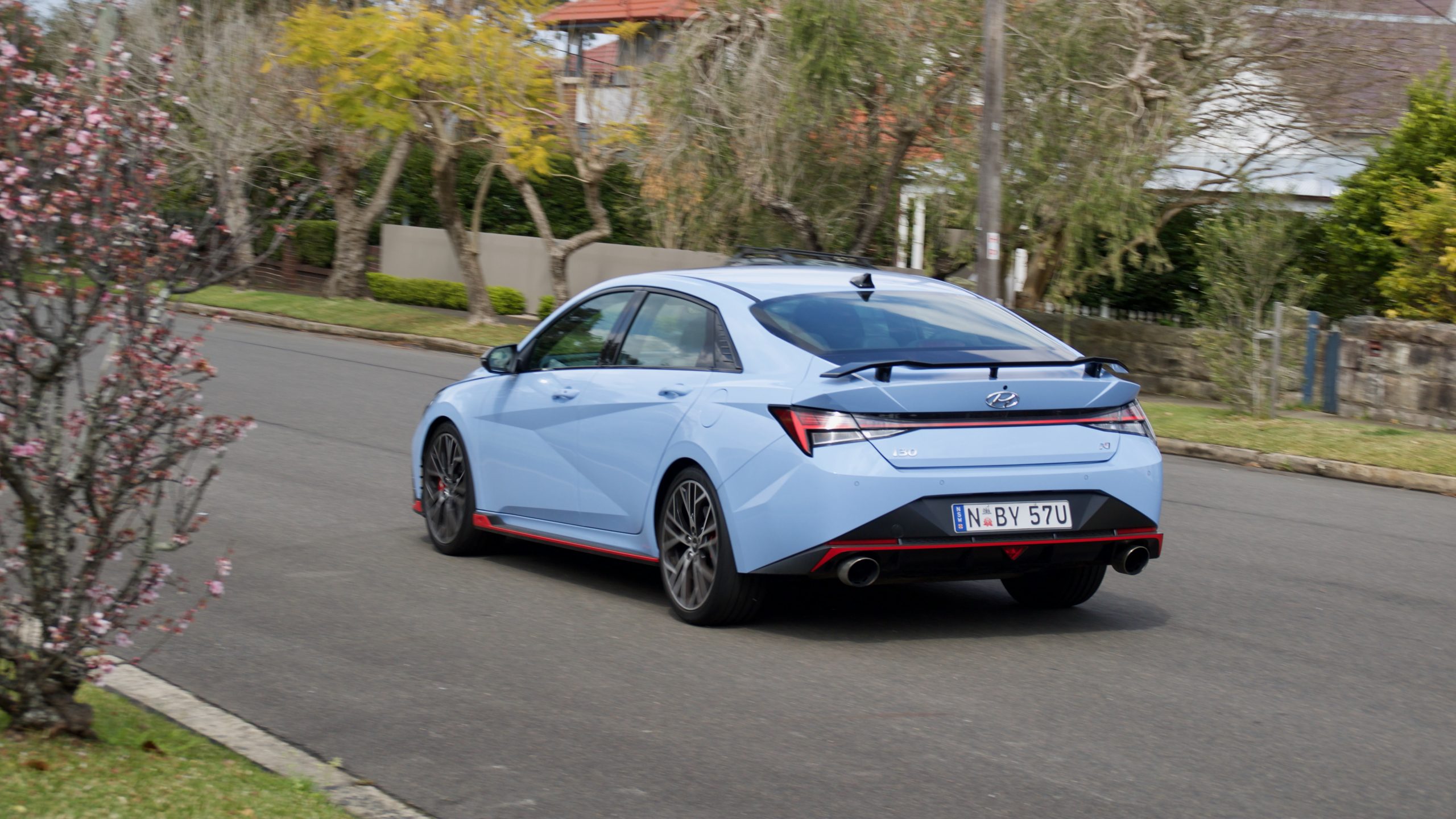
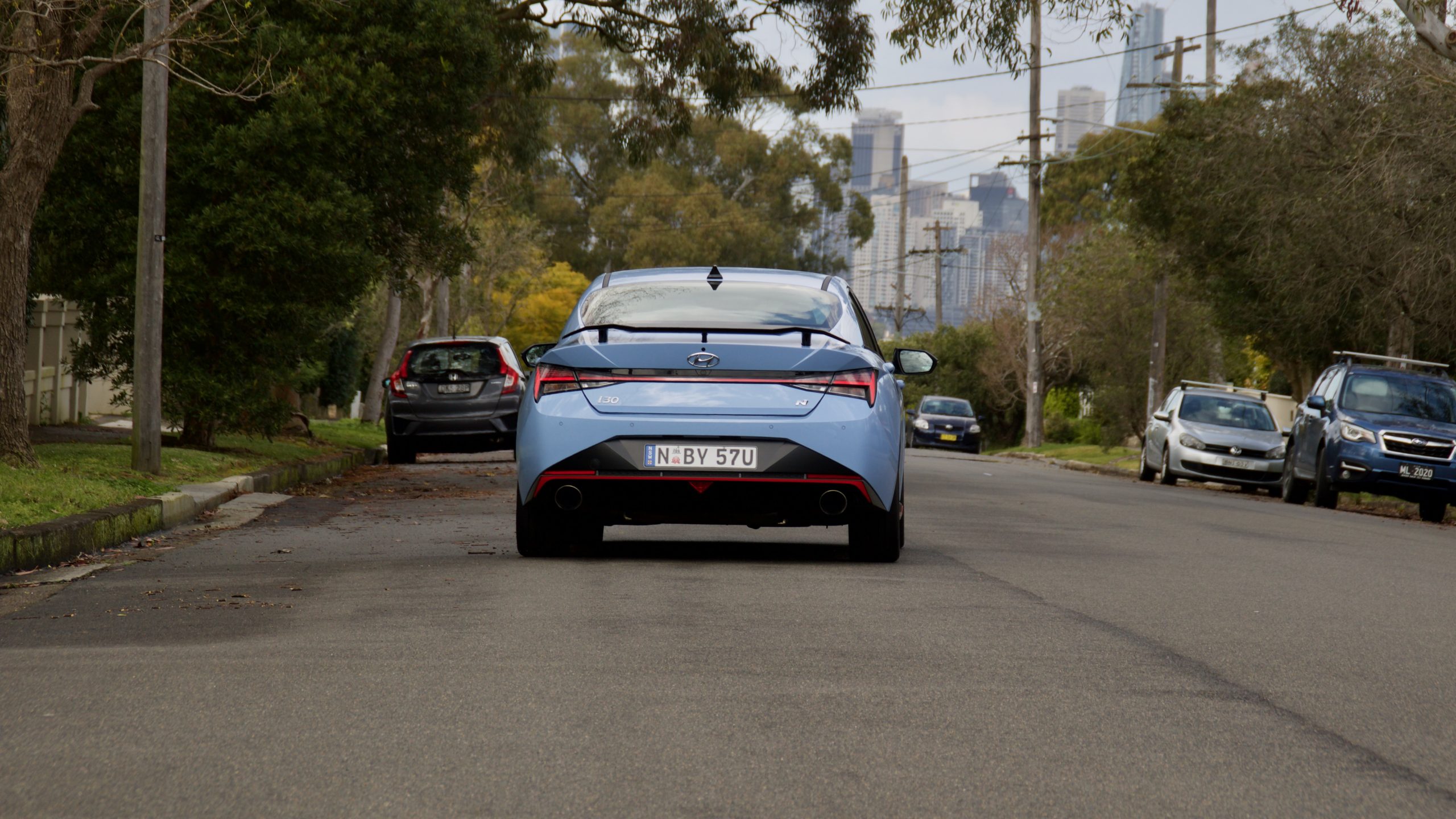
The claimed average fuel consumption for the 2022 Hyundai i30 N Premium sedan fitted with the dual-clutch transmission is 8.2L/200km. Our week spent in the i30 N sedan saw an average fuel consumption of 9.7L/100km, which we think could be a little better but it’s still better than the consumption we got in the WRX. It must use minimum 95RON premium unleaded and it has a 47-litre fuel tank.
Ride & Handling: 9/10
The 2022 Hyundai i30 N Premium sedan is a very performance-oriented car, so you would think that the ride would be rough and uncomfortable. Well, while the ride is on the firmer side it is very compliant and comfortable for daily duties due to the adaptive dampers, which changes the damping depending on what drive mode you are in. Normal mode is quite comfortable (especially compared to the shorter i30 N hatch), while both sport and N modes stiffens everything up for a more engaging experience. In N mode, it is quite firm and we’d recommend only using it on the smoothest of roads – but it still quite fun.
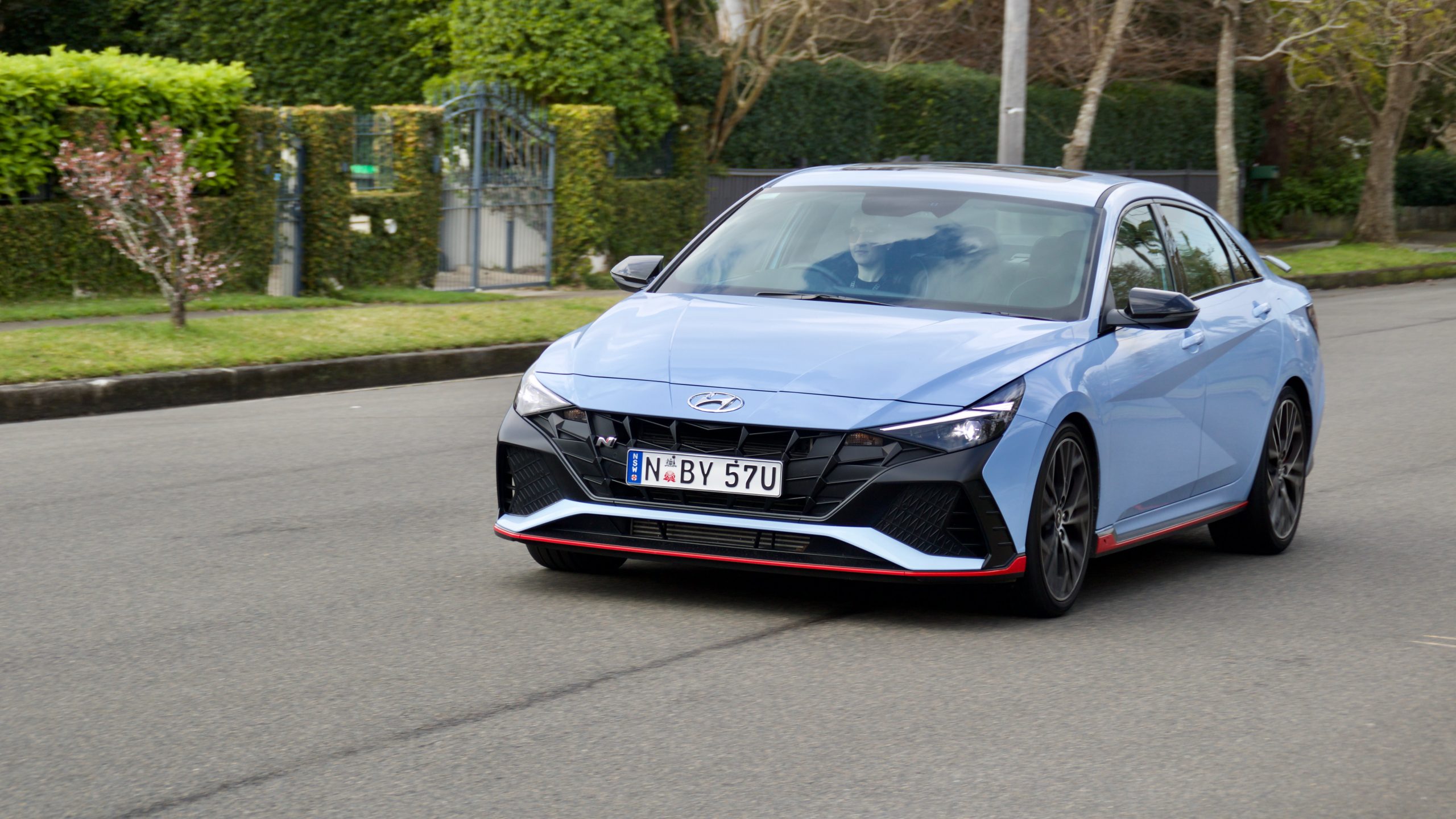
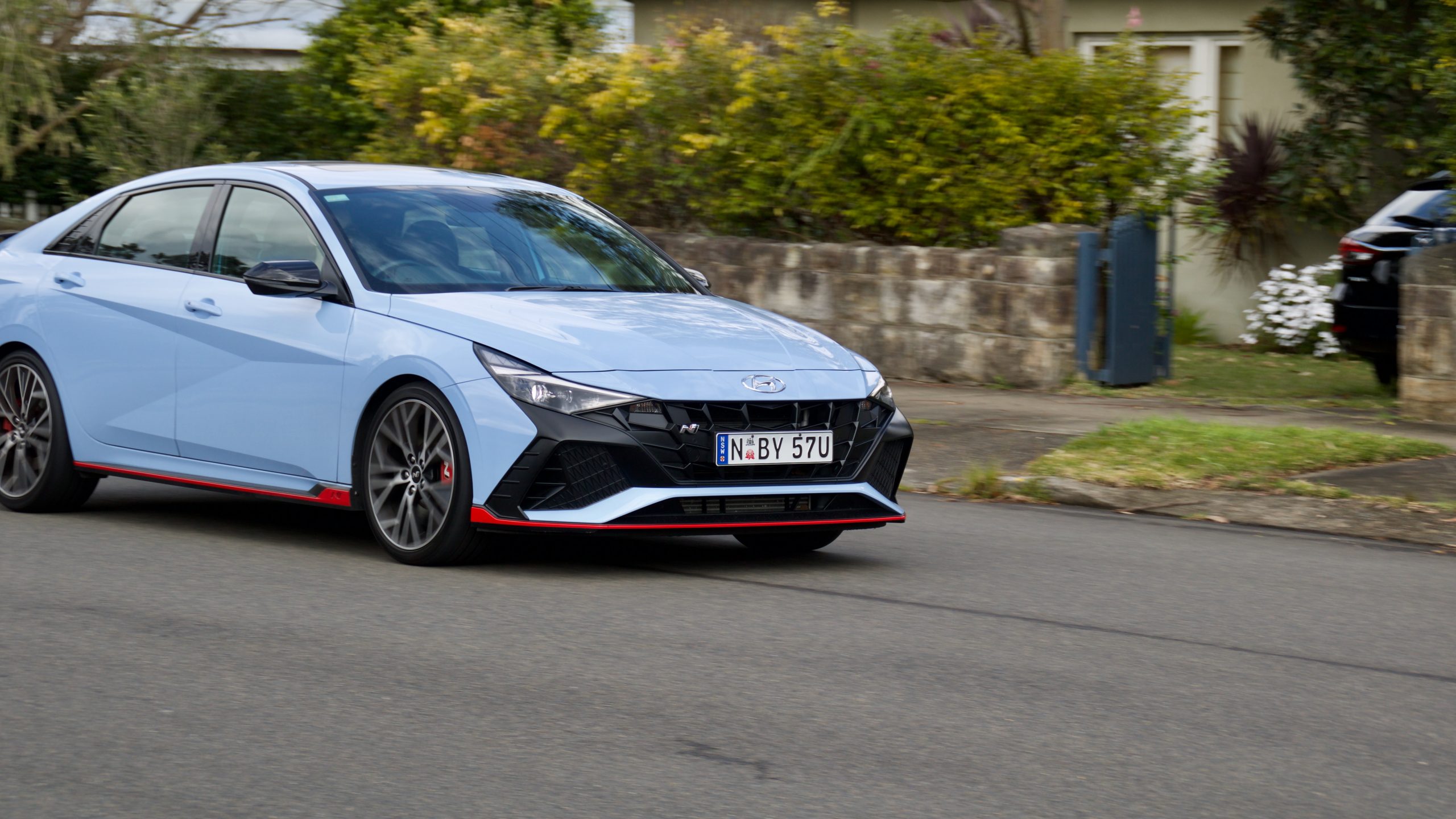
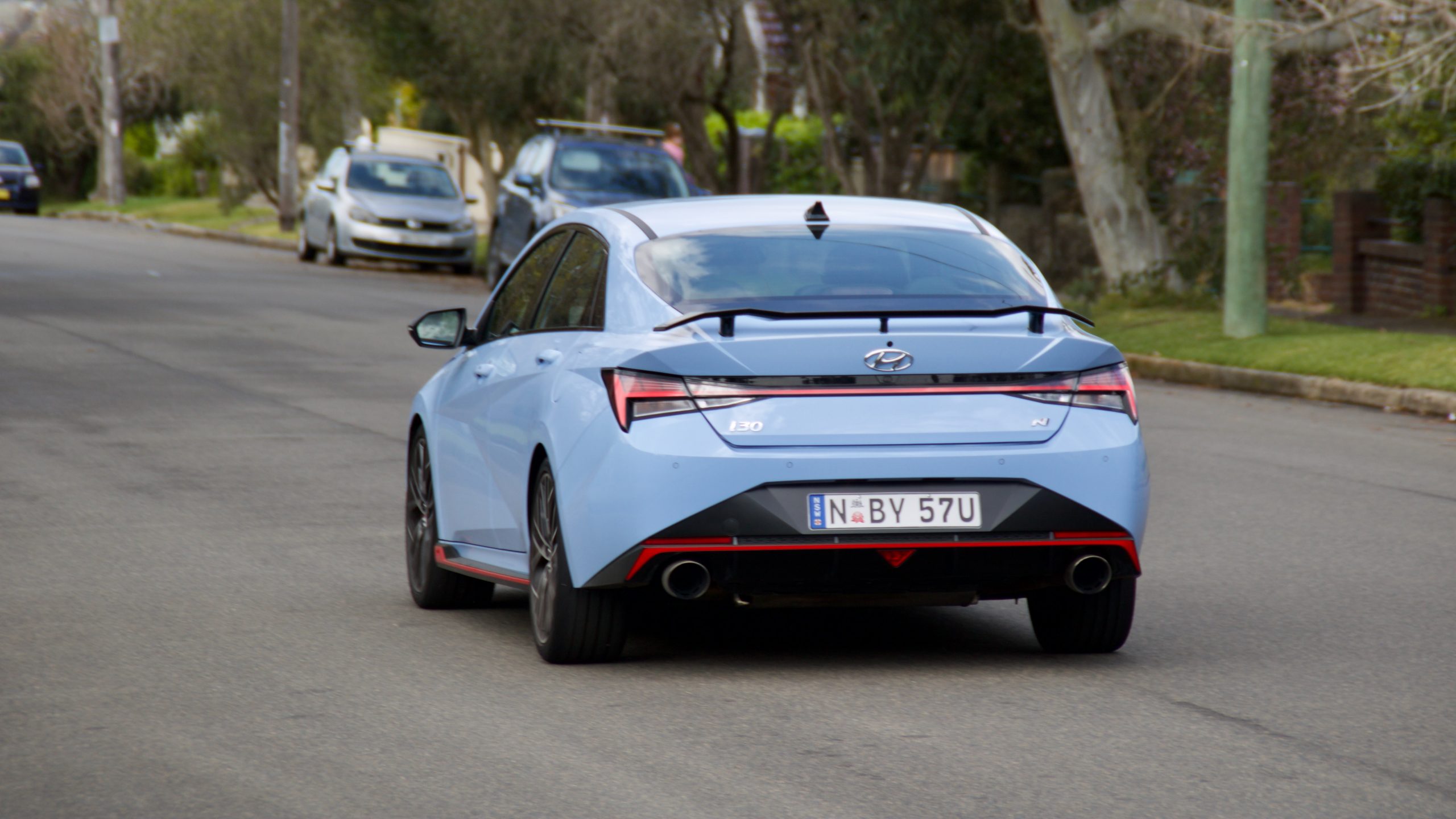
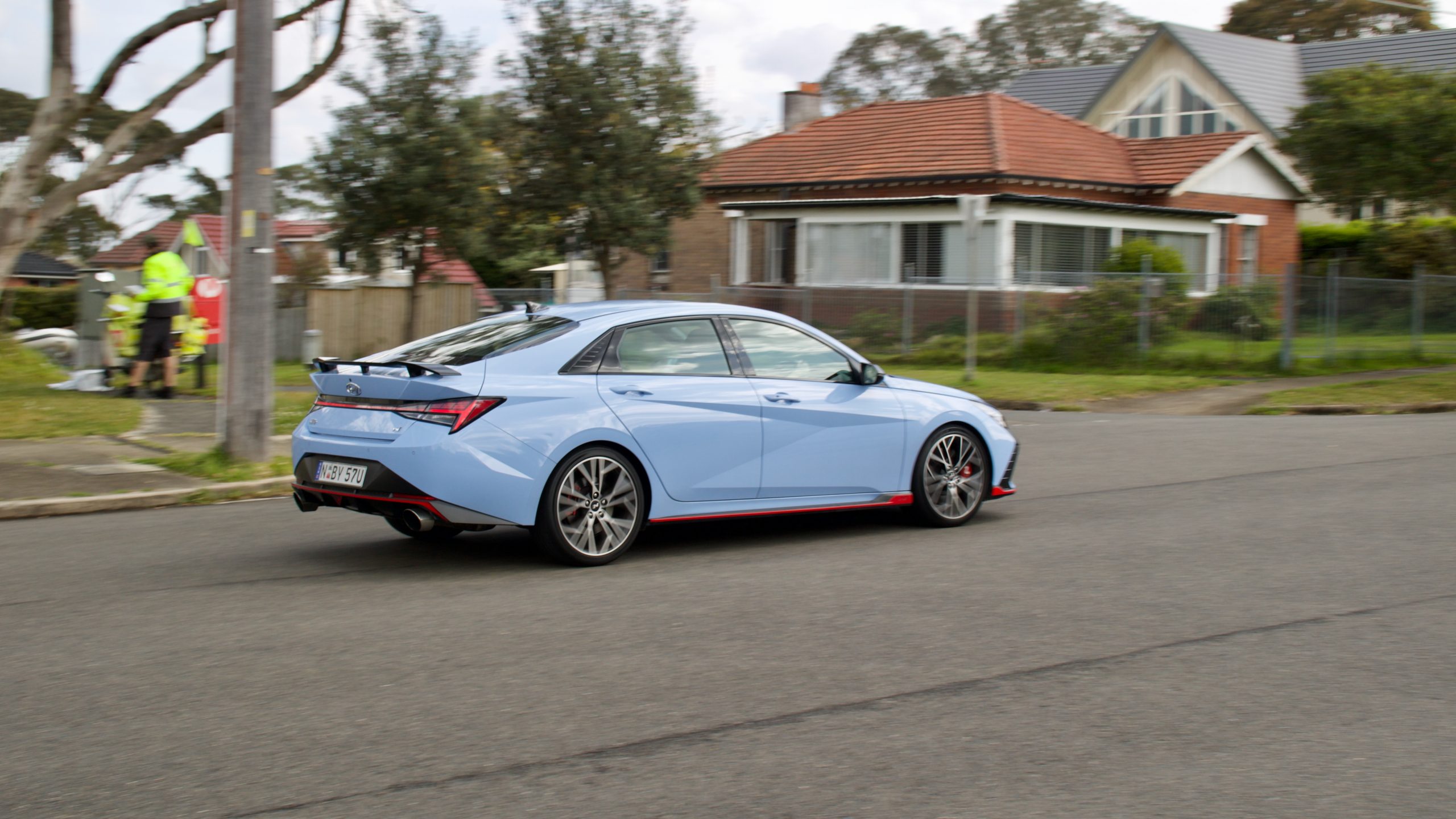
The handling ability on the i30 N sedan is excellent – there is simply no other way of putting it. In N mode, thanks to its sharpest settings of steering, ride and throttle response, the i30 N feels alive. The grip on offer – thanks to the Michelin Pilot Sport 4s tyres – is incredible and the suspension set up means there is no body roll. The control and confidence the i30 N gives you is uncanny. It’s not all good though, as the road noise in the i30 N sedan is quite loud, even on suburban streets there is a drone in the cabin that can be rather annoying.
Interior & Practicality: 8/10
Stepping into the 2022 Hyundai i30 N Premium sedan, you are greeted with a rather unconventional and modern looking dash. There is a floating screen that morphs into the digital driver’s display and the floating grab handle for the passenger. There’s certainly been a lot of effort put into the design of the i30 sedan’s cabin, which is something that we appreciate a lot in an era of somewhat drab car interior design.
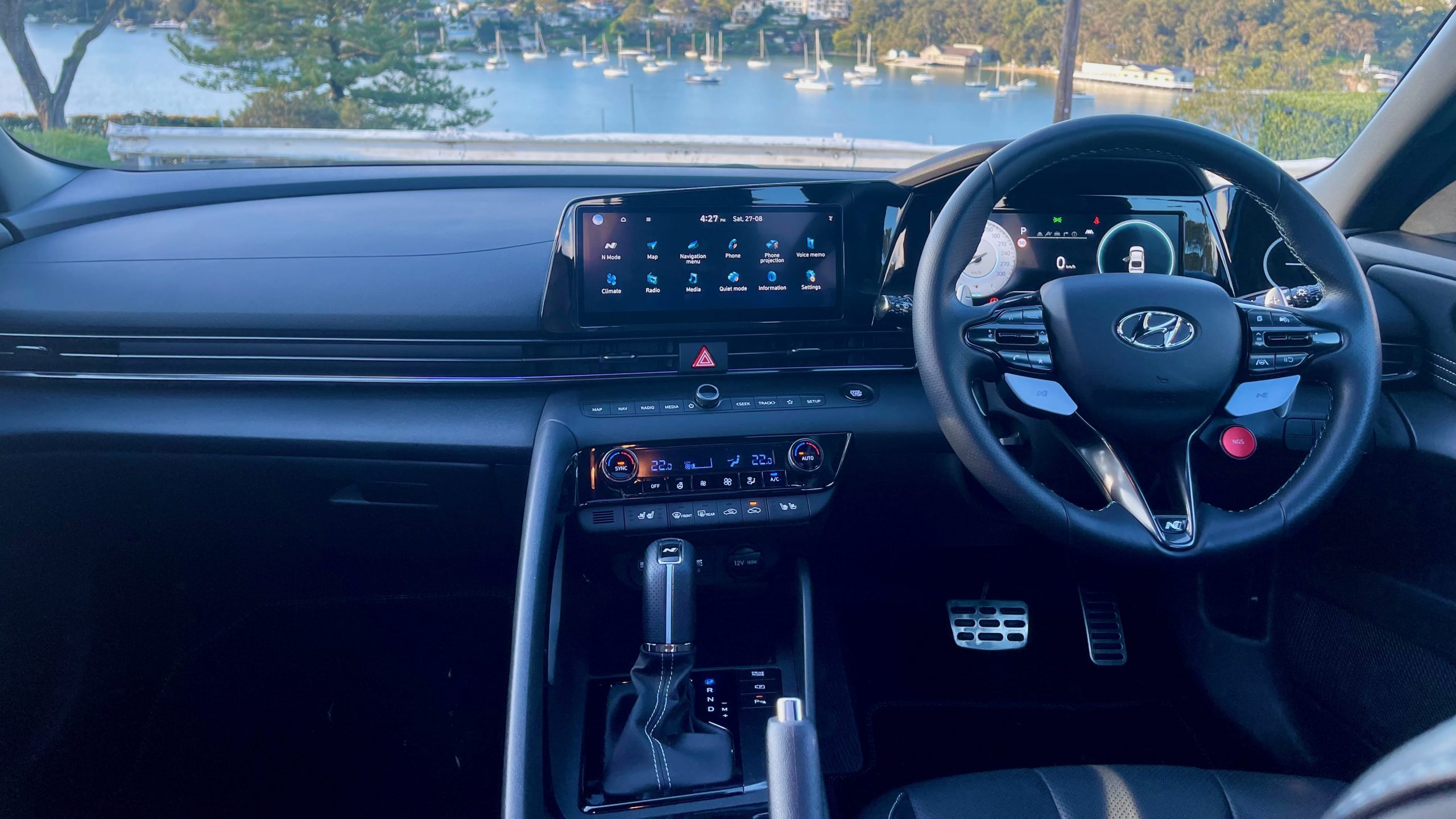
One aspect that brings the i30 sedan down a notch, however, is the interior quality. There is hard plastic everywhere with a small amount of padded material on the doors. The interior also creeks and makes noises when you go over bumps (or even rest your knee against the centre console), though that could’ve just been our test car. The European-focussed (versus the American-focussed sedan) i30 N hatch’s interior definitely has a more premium interior.
There are some clever storage solutions in the i30 N sedan’s interior. There is the wireless charging pad in front of the gear knob to store a phone and other small items, deep door bins, two cupholders, a spot to put a wallet by the passenger’s knee, a big glove box and a generously sized centre console.
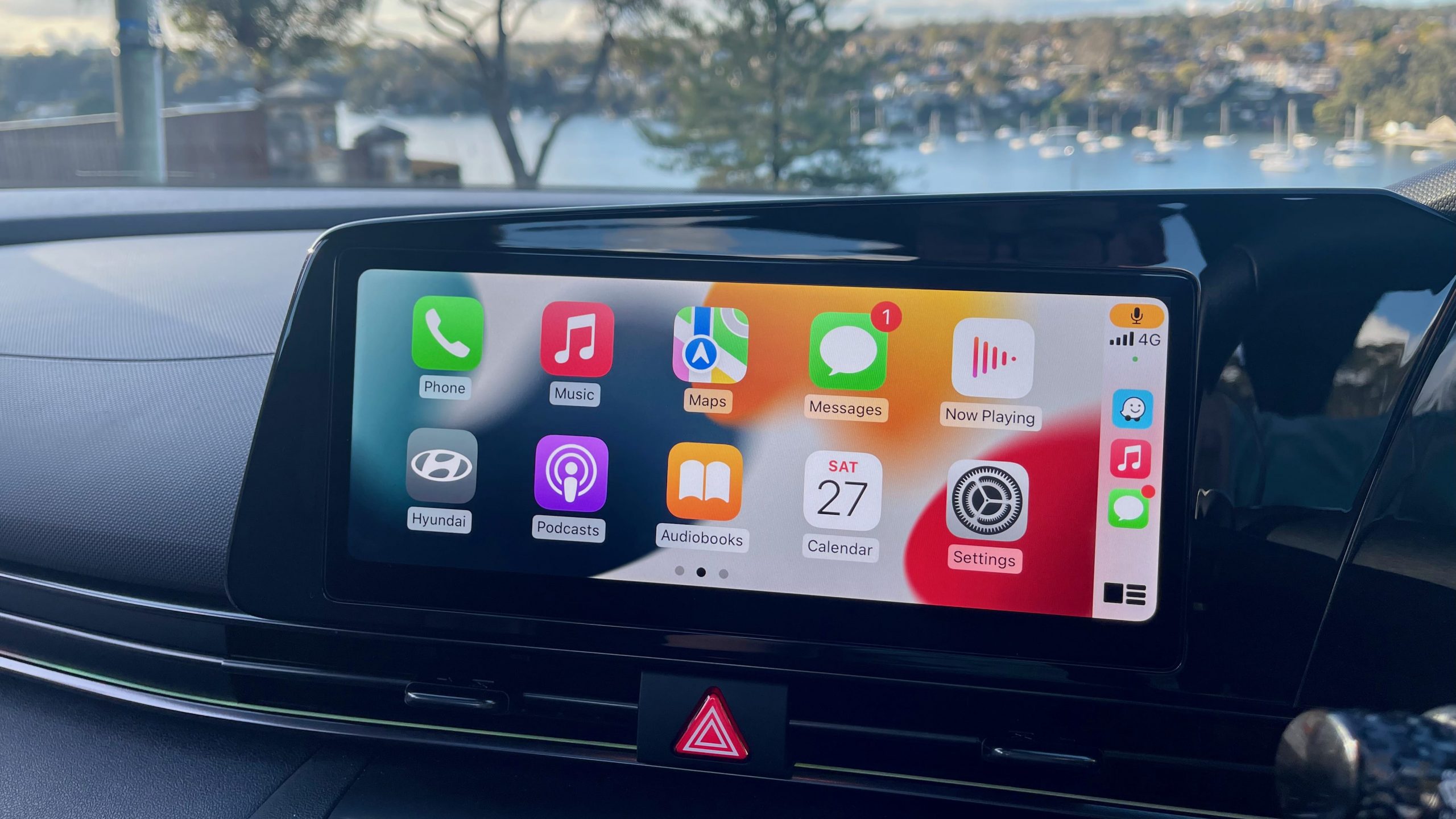
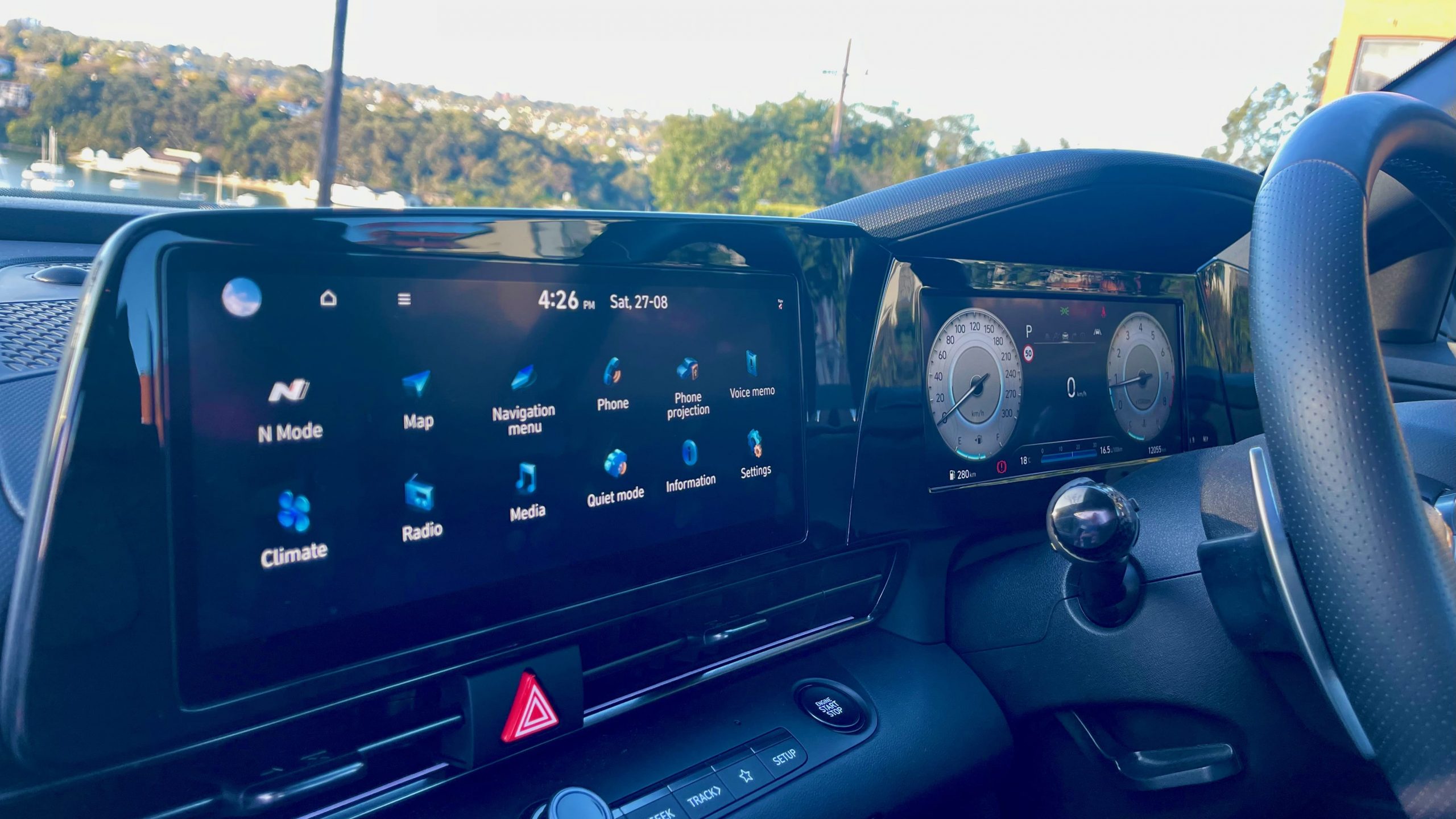
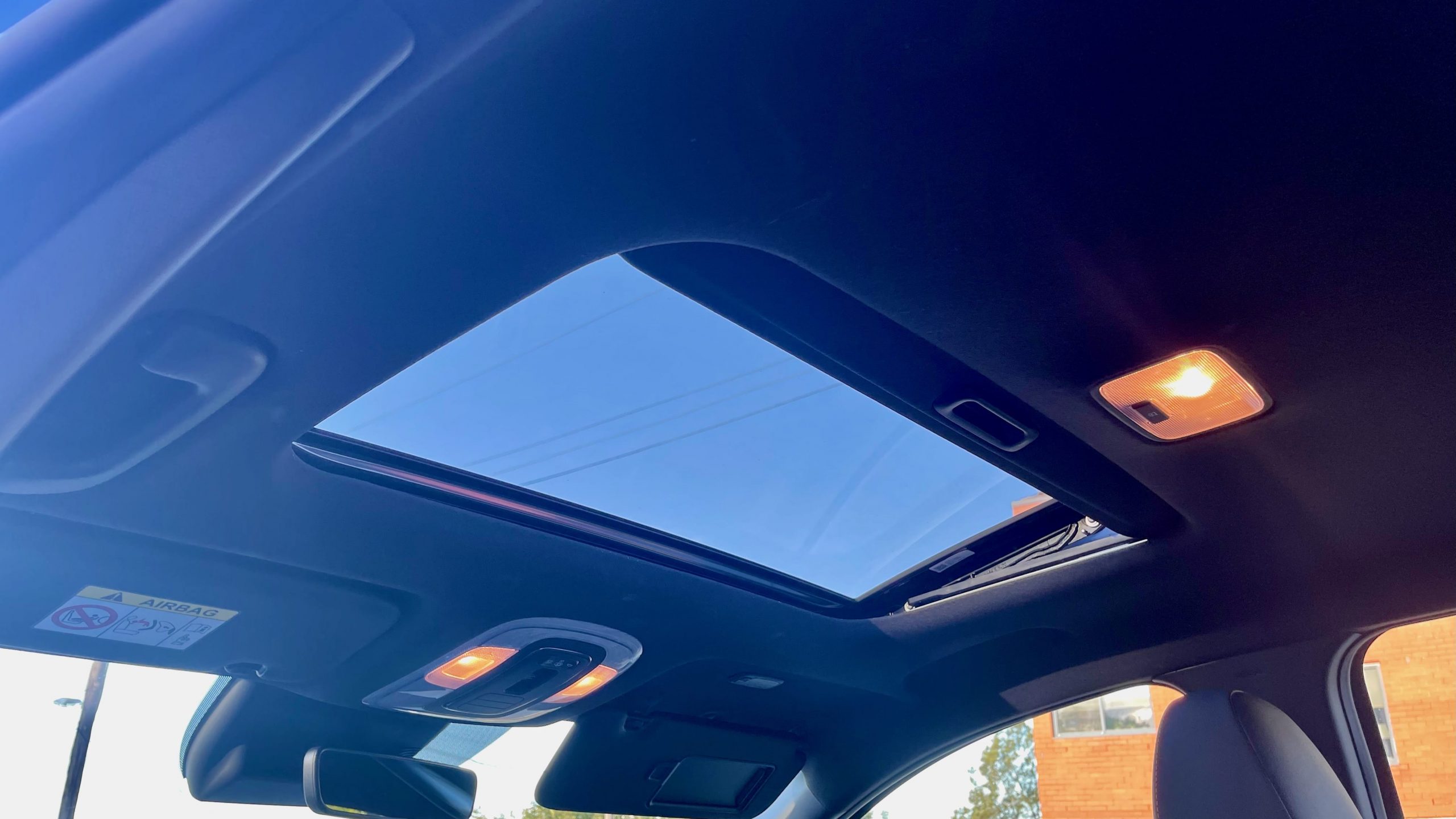
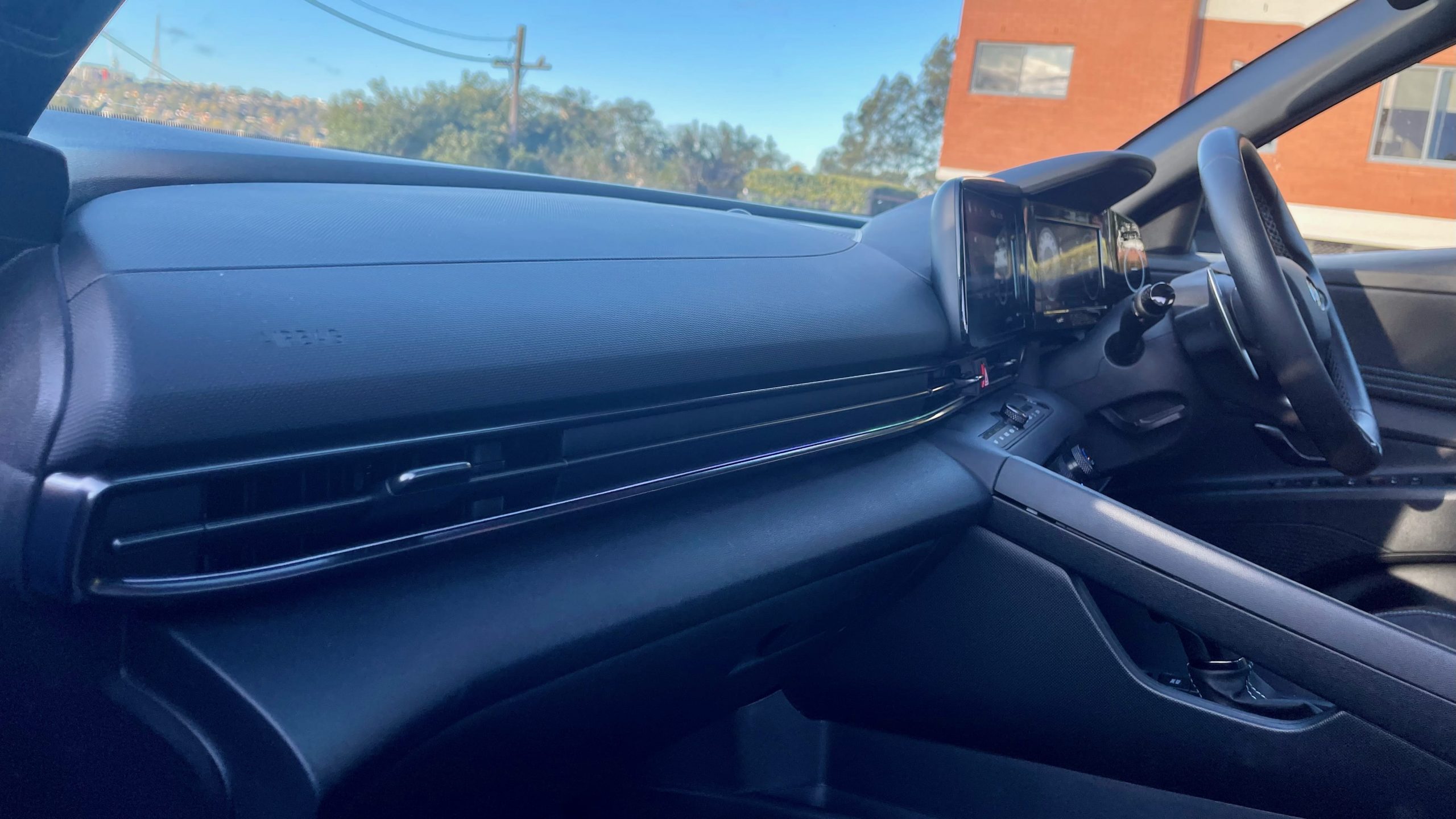
The infotainment system used in the i30 N sedan is the same 10.25-inch touchscreen unit that’s used in a lot of other Hyundai products at the moment. The screen quality is great, it’s easy to use, quick to respond to touch and is a generally great system to use. We also quite like the Bose sound system, which is far superior to the Harman Kardon units used in other Hyundai products.
The rear seats are rather spacious in the i30 N sedan. Two adults or three children could fit back there comfortably. The one thing that may prohibit people is the head room which could hinder taller passengers. There are unfortunately no USB ports in the rear but there is rear air vents, map pockets, a centre armrest with cup holders and door pockets.
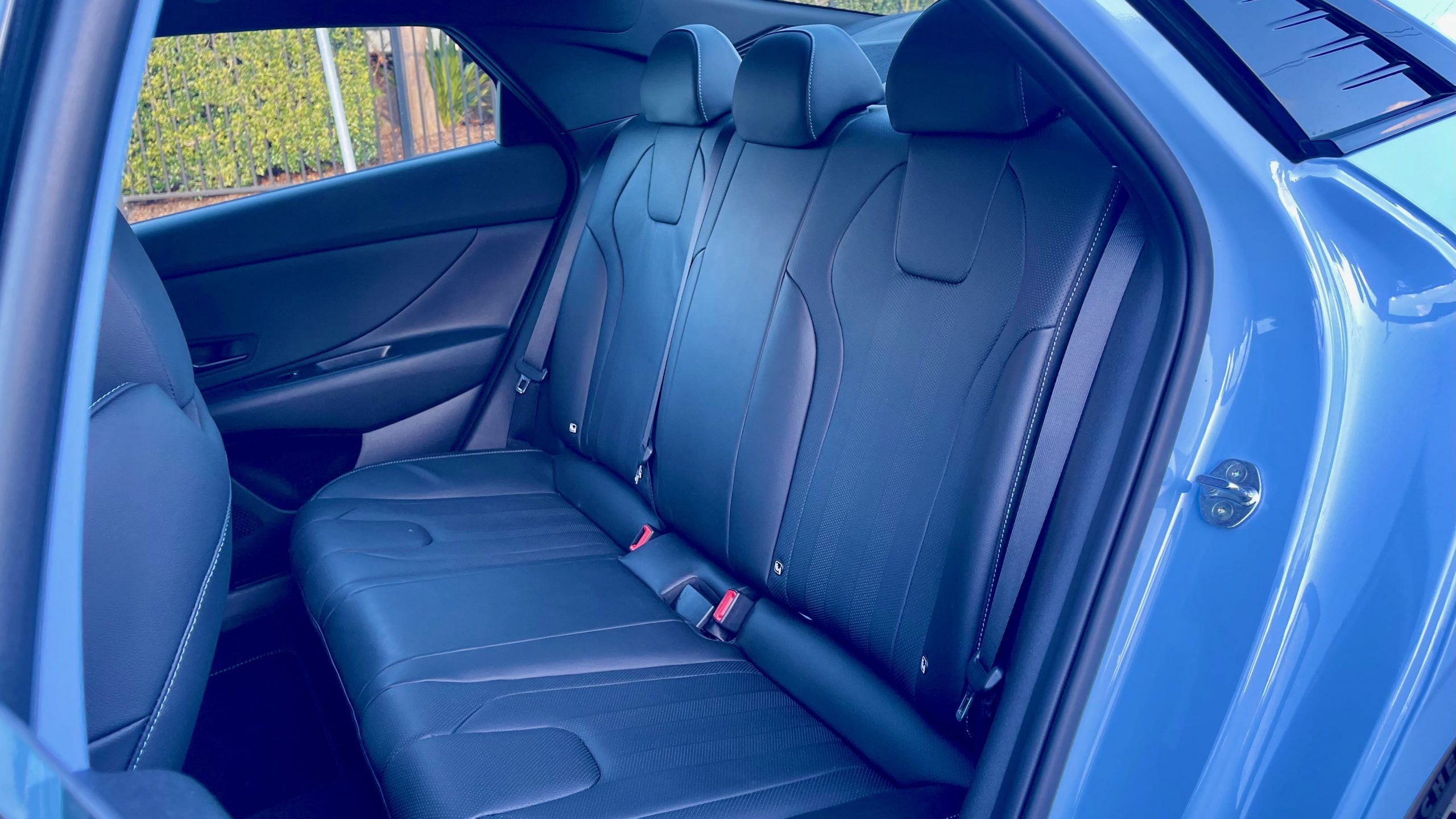
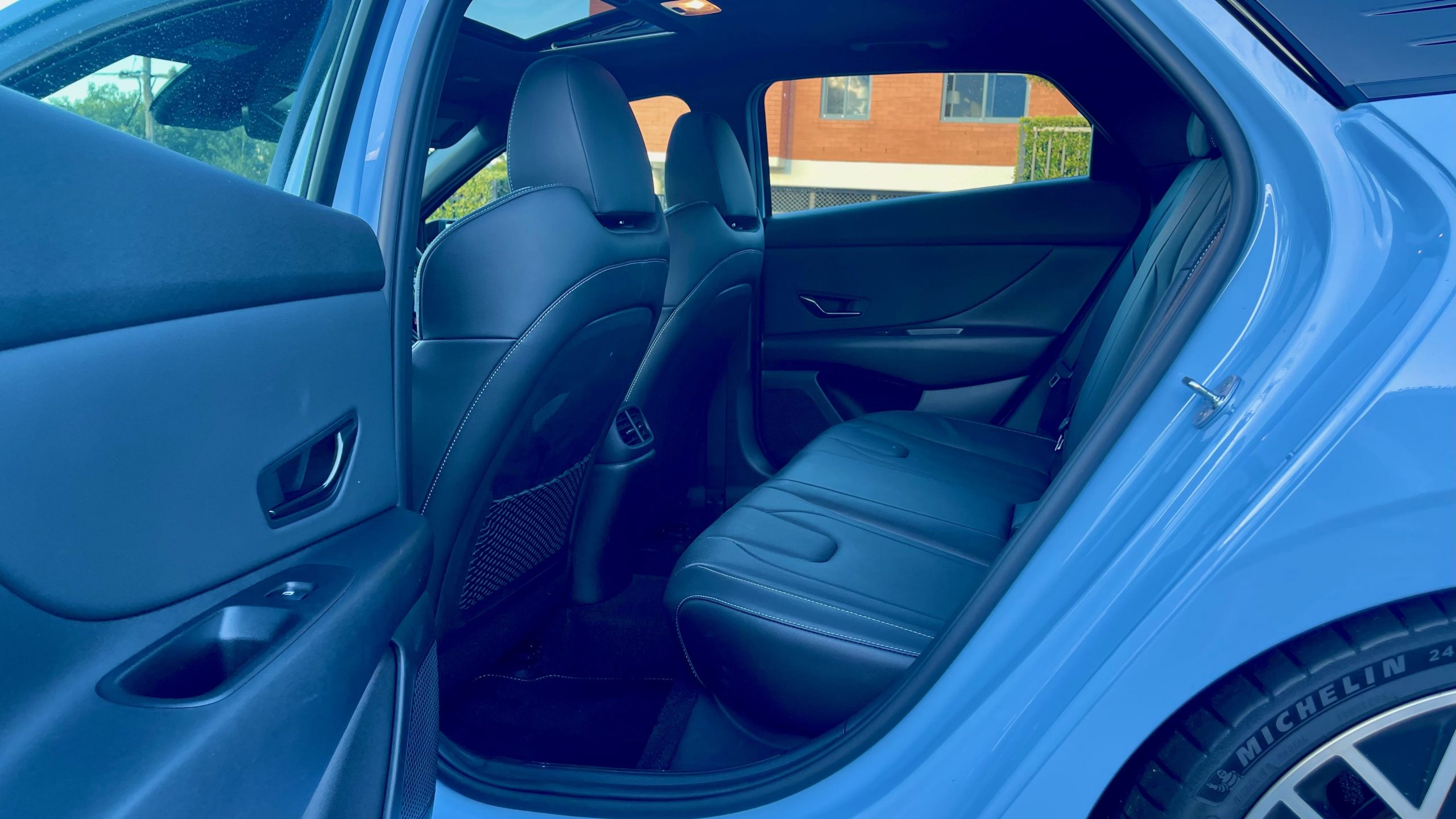
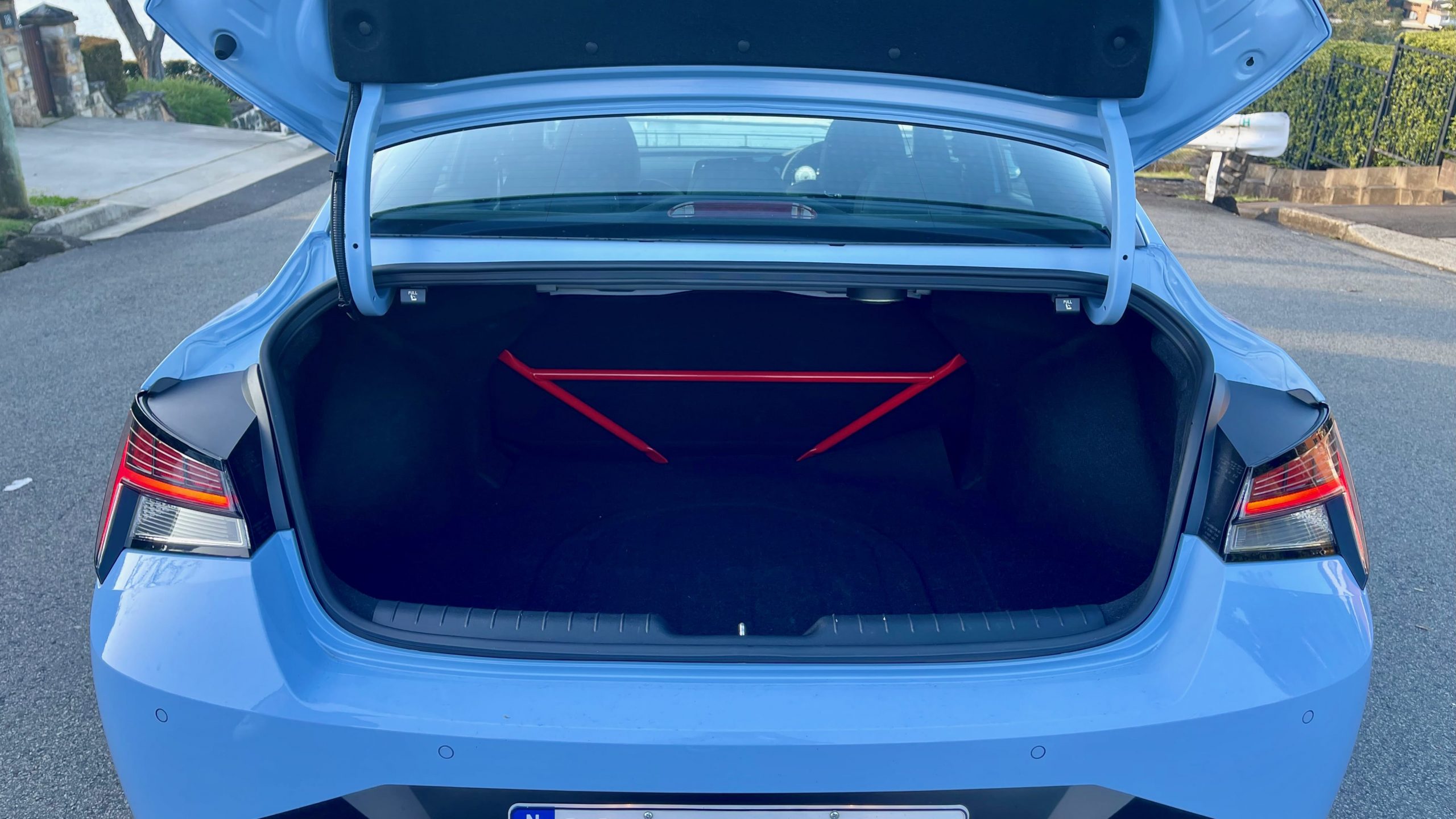
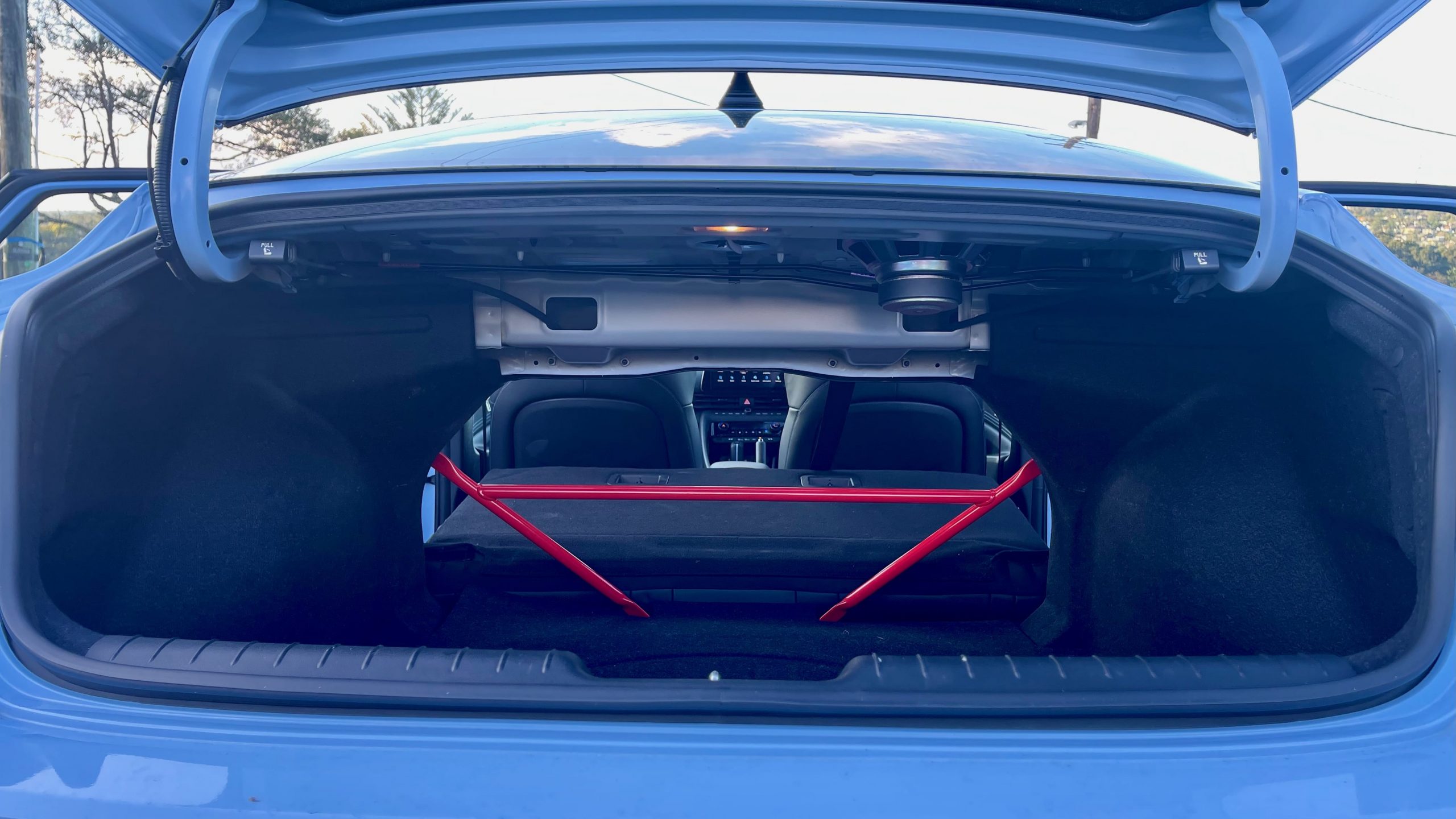
Opening the boot via the key, button on the tailgate or 90’s style pull switch in the cabin reveals 464-litres of cargo space, which we think is rather healthy. The rear seat can fold down to open this space up though sliding longer items through could be an issue with the roll bar that is in the boot – thankfully, it is removable for carrying bigger loads. In comparison, the Subaru WRX has a 411L boot and the Skoda Octavia RS can carry a massive 600L of cargo, but it is also a bigger car.
Service & Warranty: 8/10
The i30 N Sedan comes with Hyundai’s five-year unlimited kilometre warranty, which is on par with what is offered by Skoda for the Octavia RS and by Subaru for the WRX. While the WRX comes with just 12 months of roadside assistance, the Octavia RS and i30 N come with that same 12 months, but it is extended by a further 12 months at every scheduled service through Skoda and Hyundai dealerships for up to five years in total.
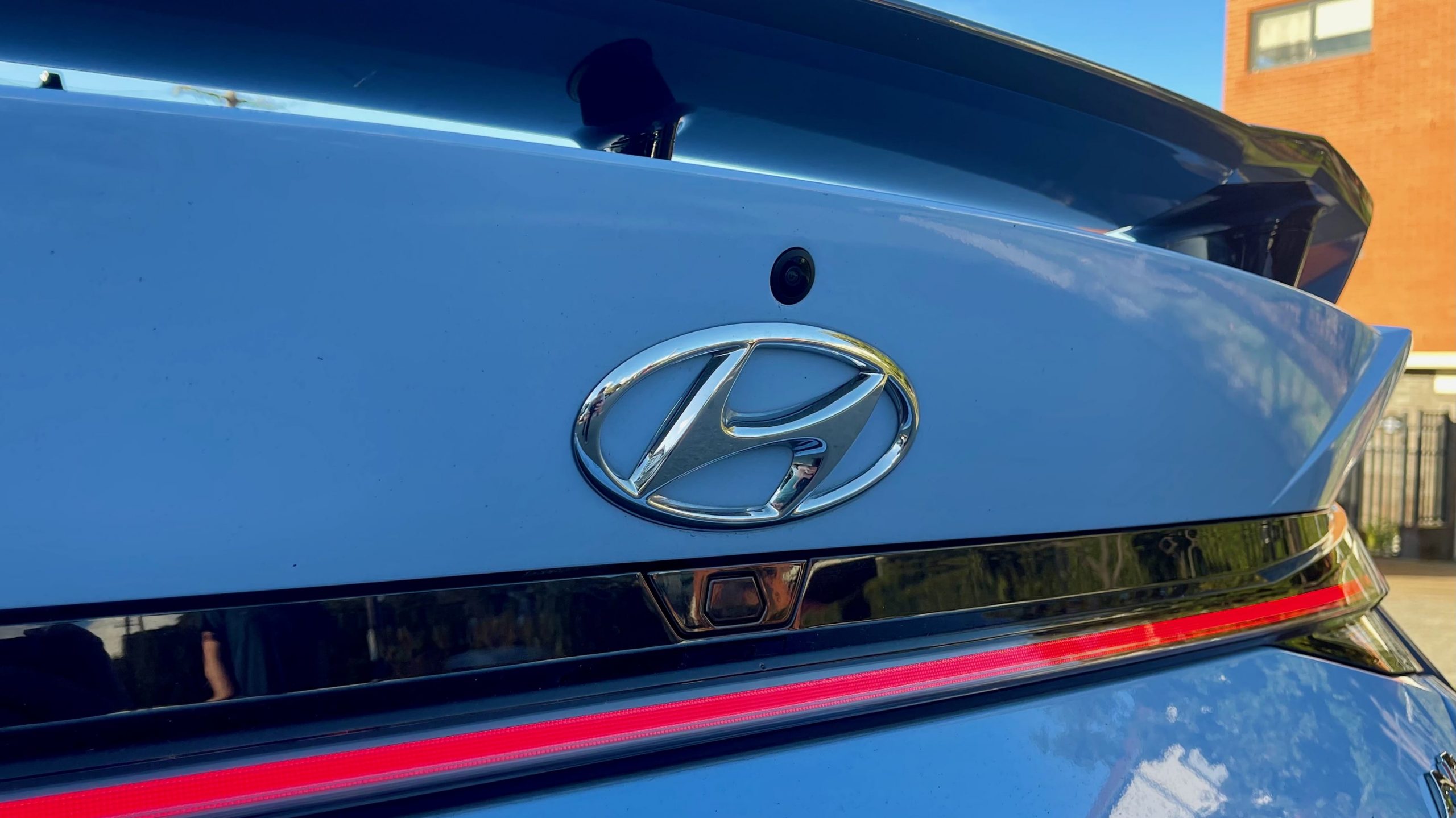
Servicing for the Hyundai occurs every 12 months or 10,000km, which is more frequent than the intervals of the WRX and Octavia RS at every 12 months or 15,000km. The cost to service the i30 N Sedan DCT over the span of five years or 50,000km is $1,675 ($335 per service). Compare this to the $3,071 it costs to service the Skoda over the same time period (although over 75,000km) and the $2,365.74 it costs to service the Subaru and the Hyundai’s pricing looks rather good – but keep in mind that the Hyundai has shorter service intervals and driving the same distance as a WRX or Octavia will push that cost up.
2022 Hyundai i30 N Premium Sedan DiscoverAuto Rating: 8.6/10
We love hot hatches here at DiscoverAuto and while we were initially sceptical at how good the i30 N sedan would be compared to the excellent hatch, we were pleasantly surprised. Put simply, the 2022 Hyundai i30 N sedan is an excellent performance bargain. There is oodles of power but it is also relatively comfortable for daily duties. It’s a true dual-level personality of a car, but in a good way – it’s capable of taking the kids to school but then capable of mind-blowing laps at the track afterwards.
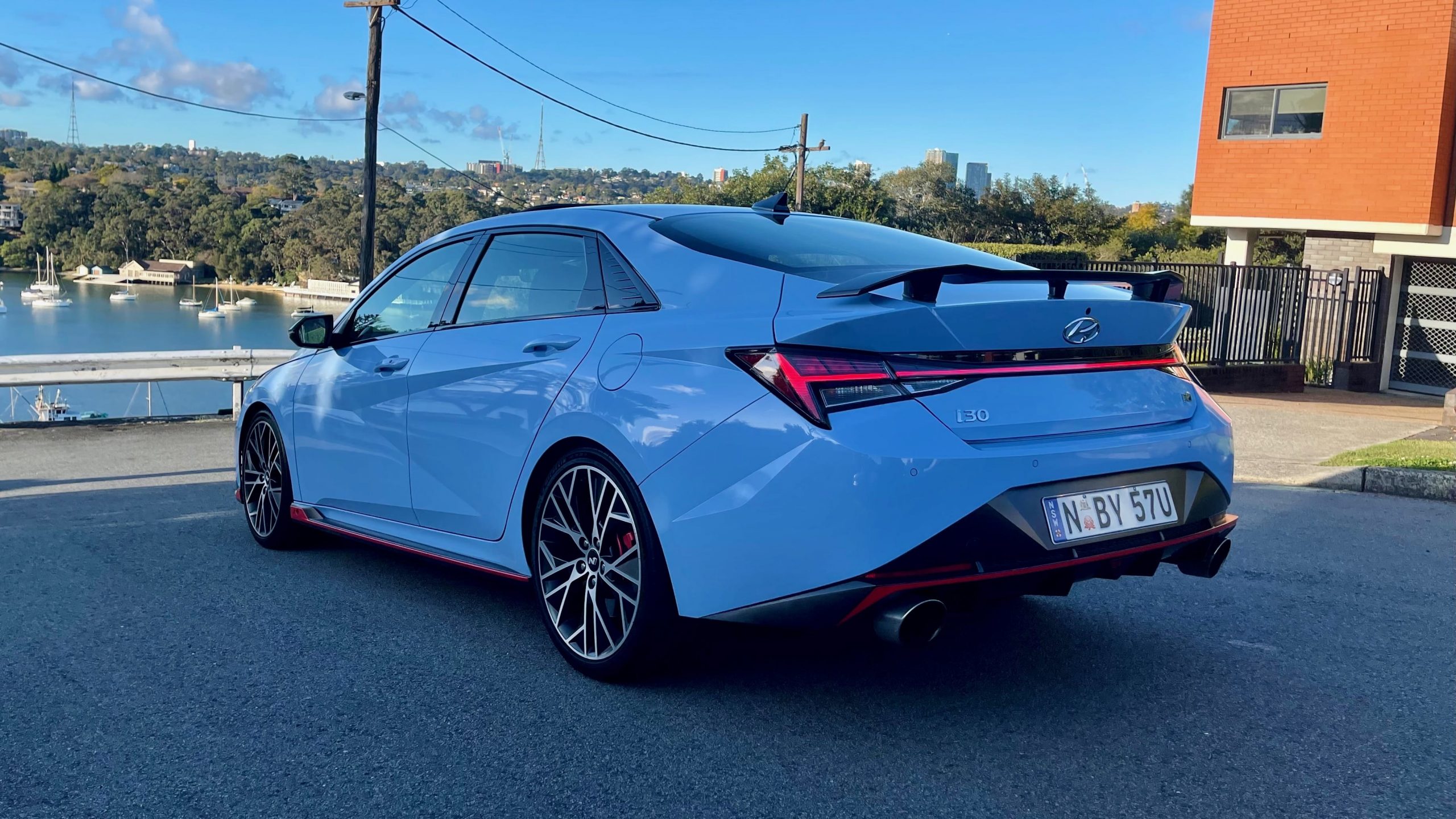
Yes, the hatch has a better quality interior and it could be better on fuel, but we love the i30 N. Would we consider one over its chief rivals, including the Subaru WRX or Skoda Octavia RS? Well, those are both softer and less focused options, but the i30 N is undoubtedly more fun to drive and it’s also much better value for money. If you’re looking for a practical but fast (and quite loud) daily driver that can take things seriously when needed, the i30 N is definitely worthy of consideration.
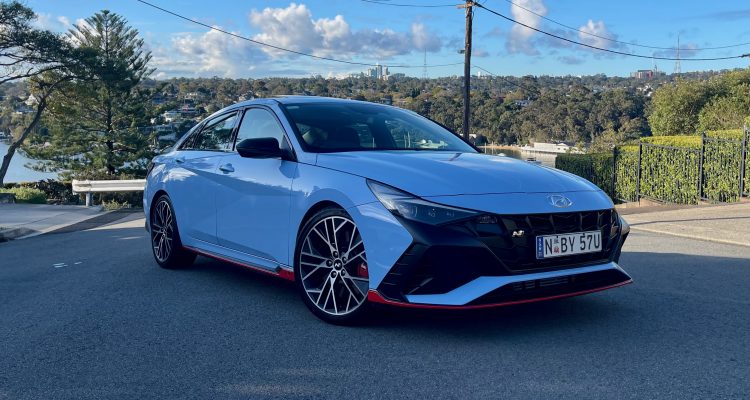
Leave a Reply